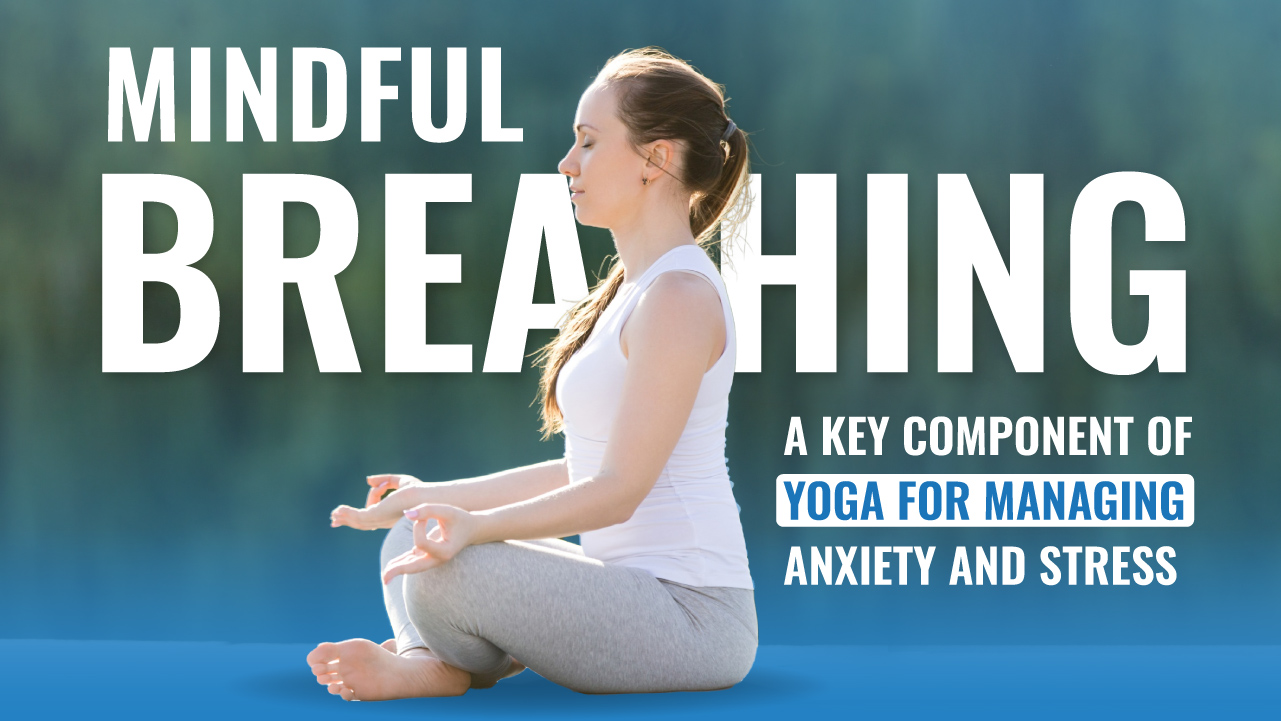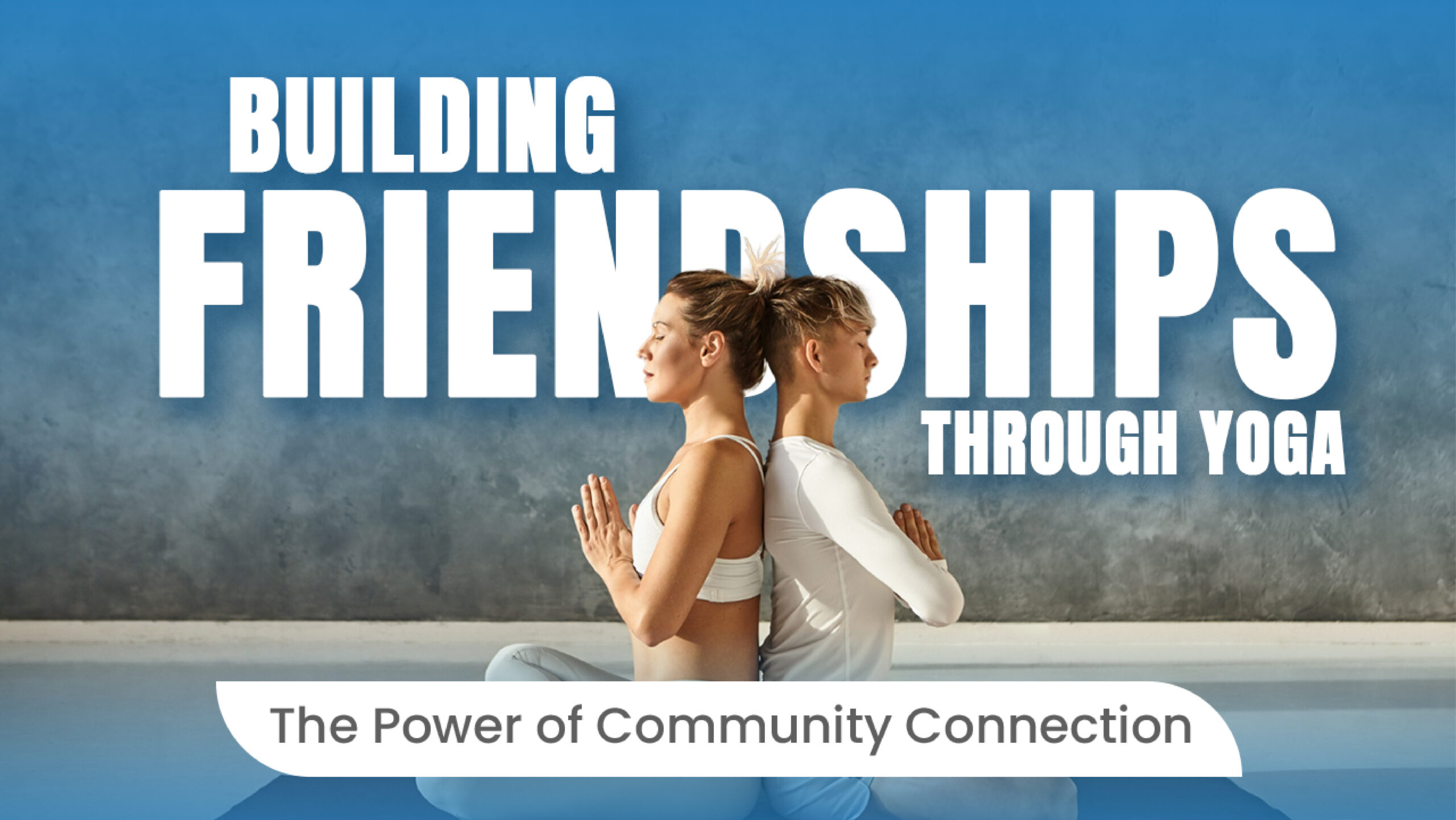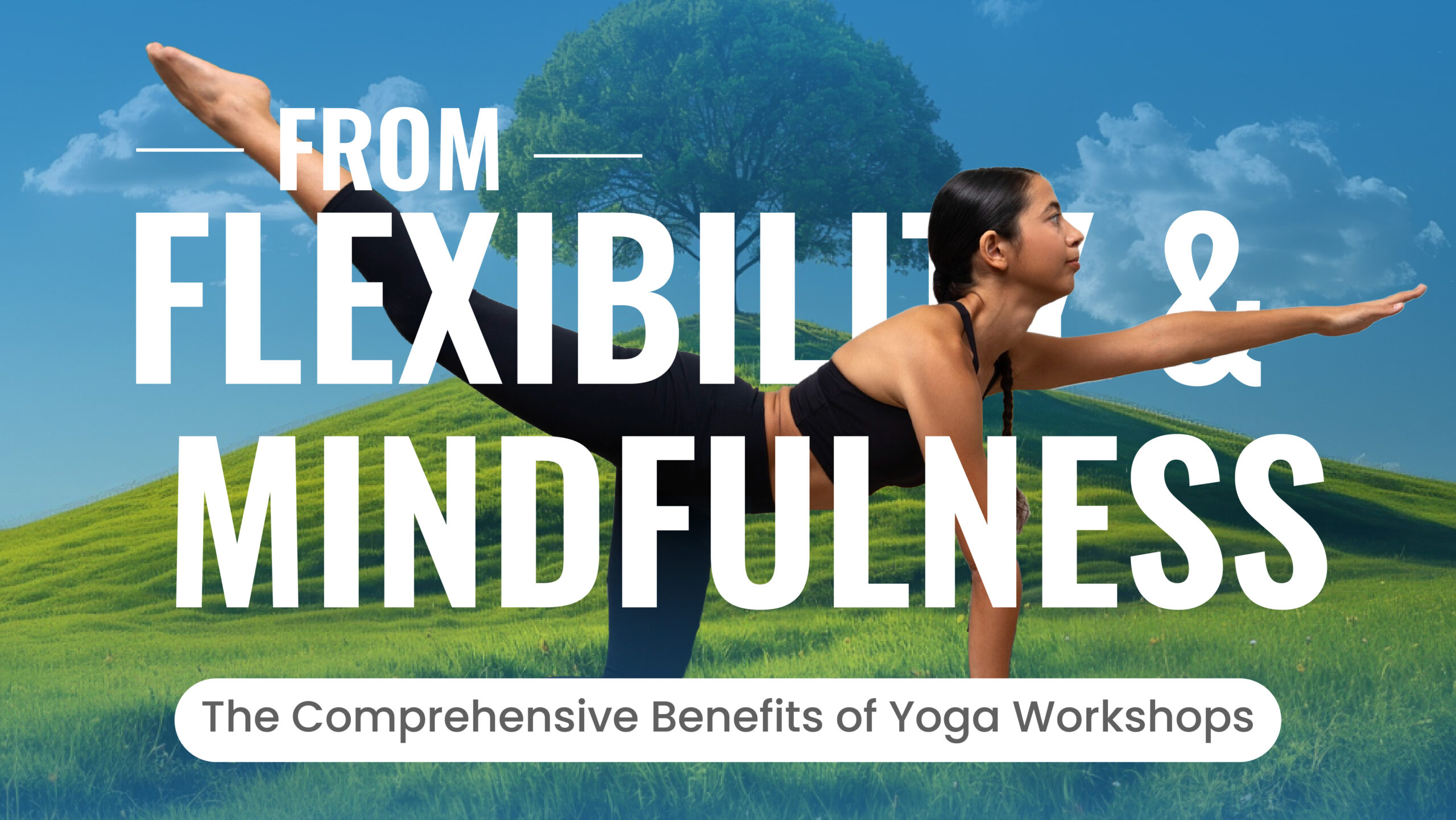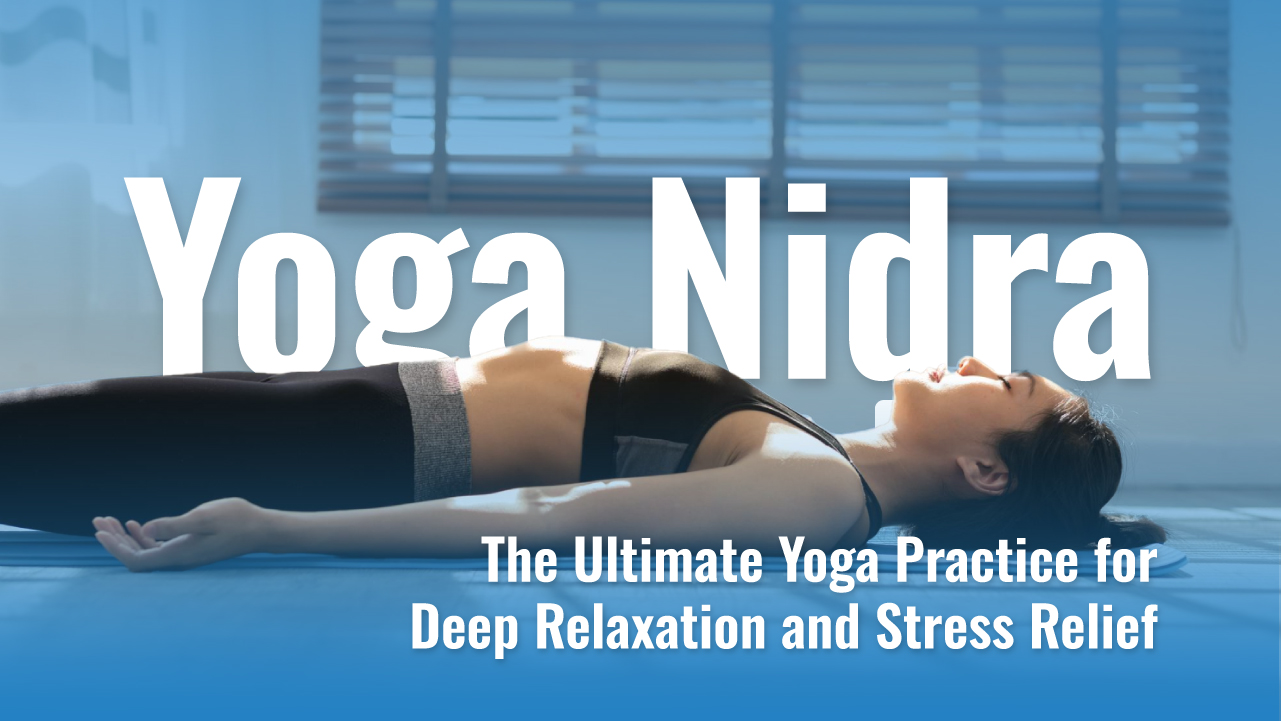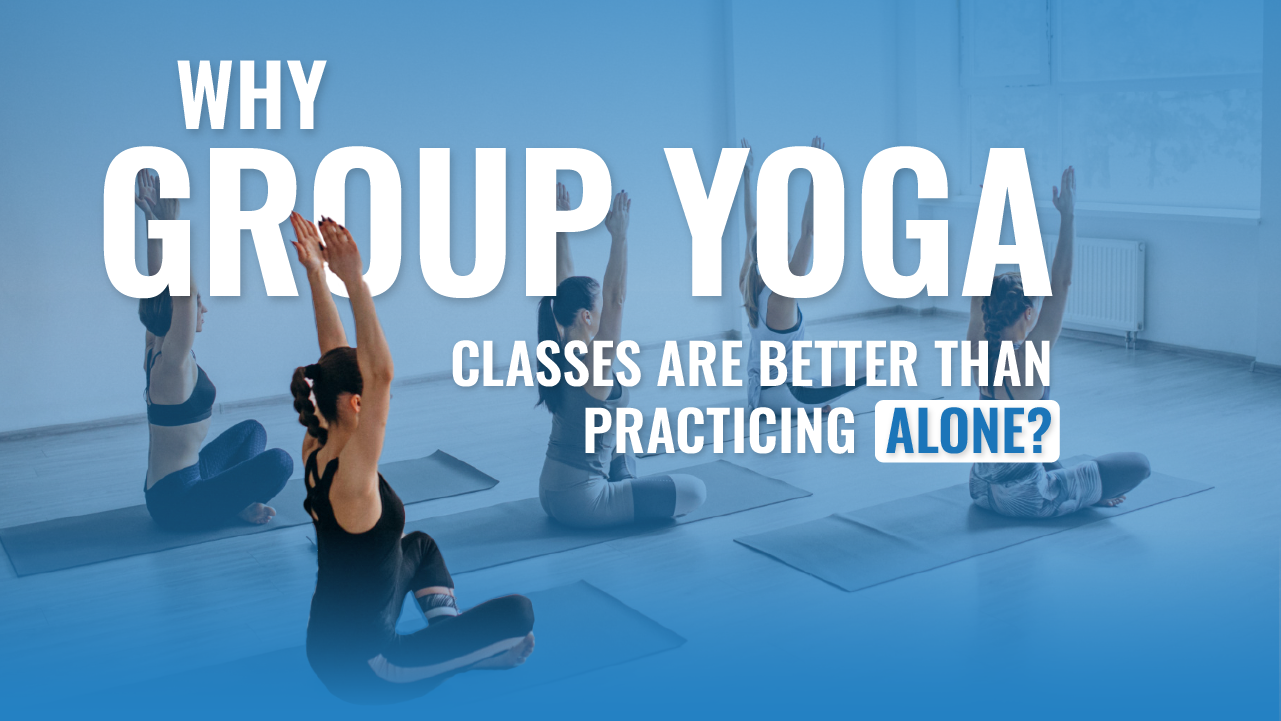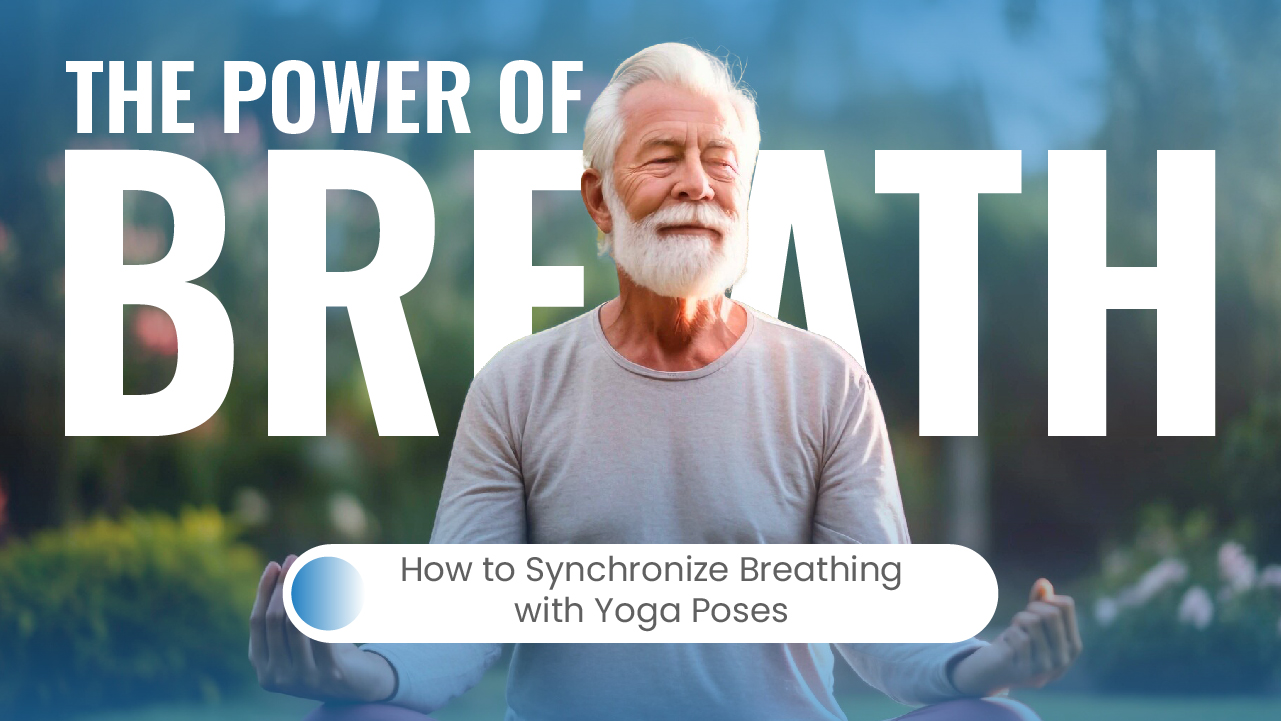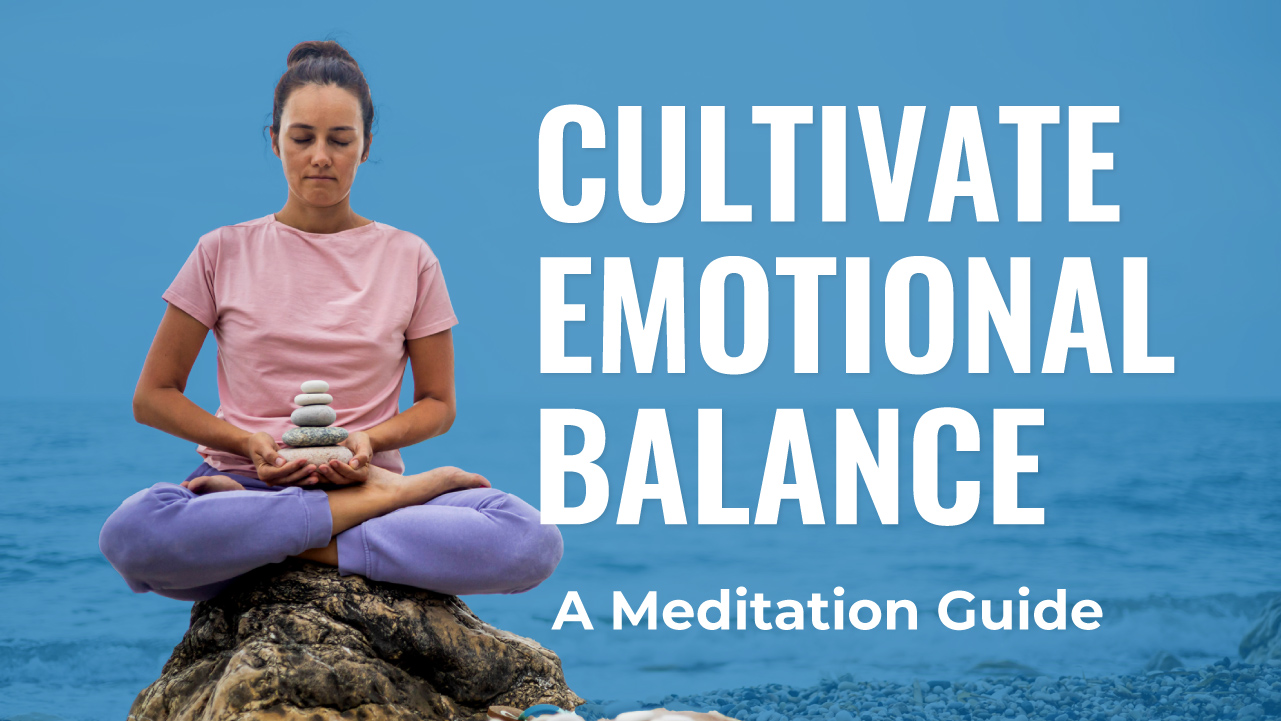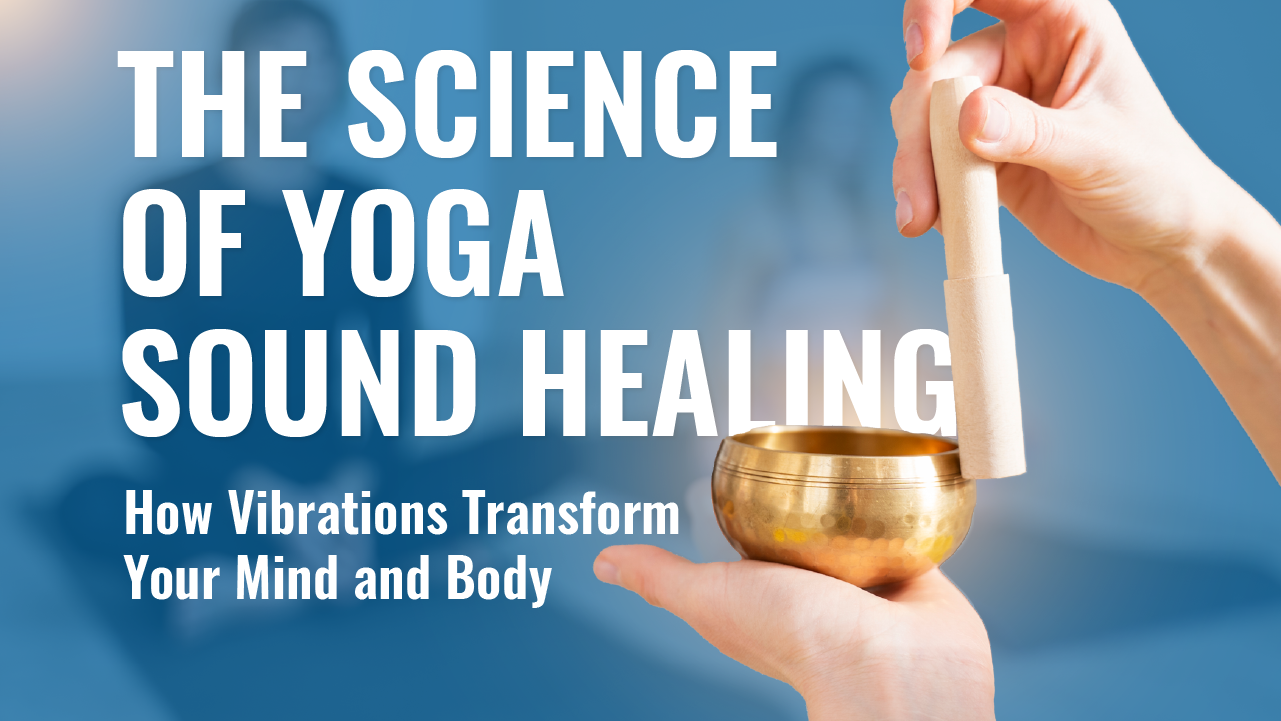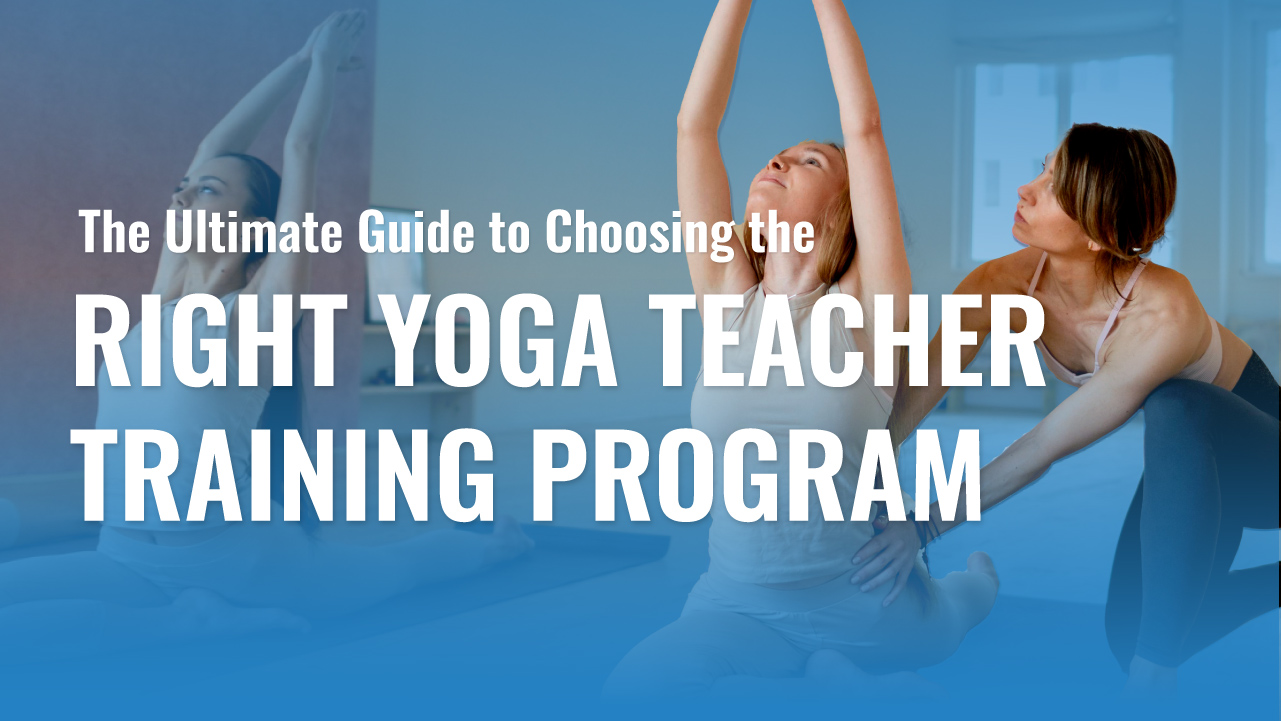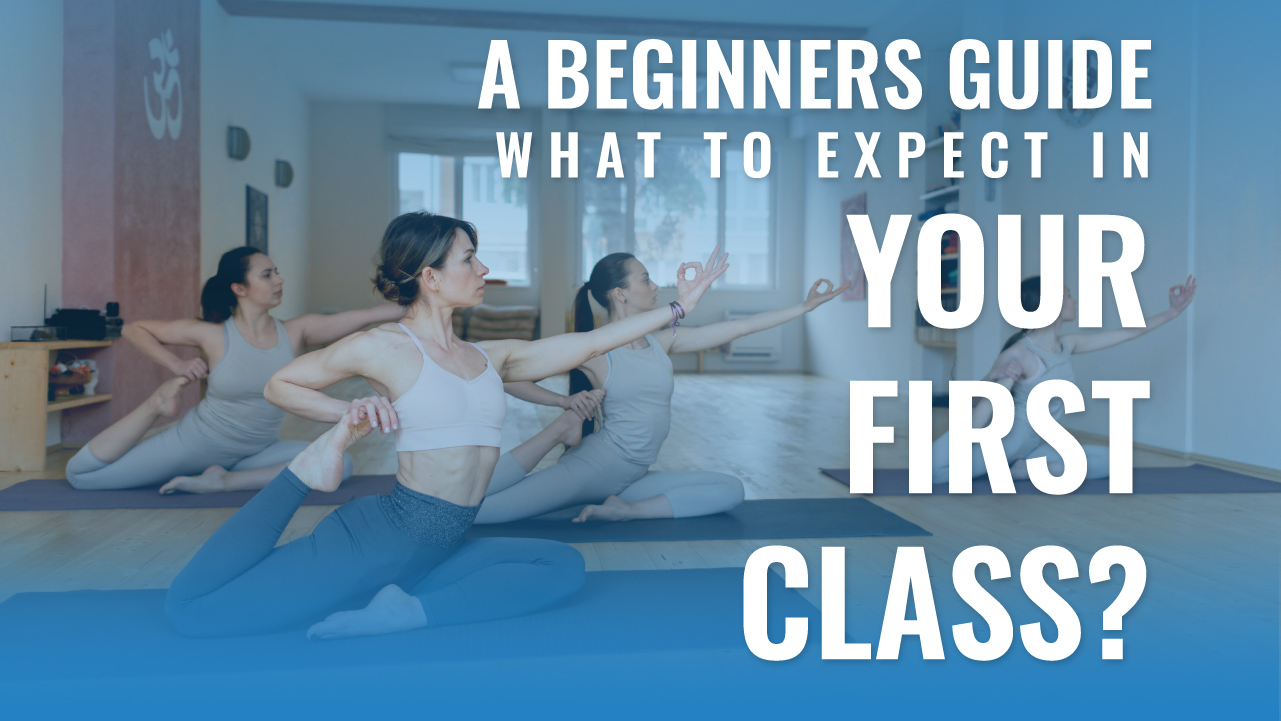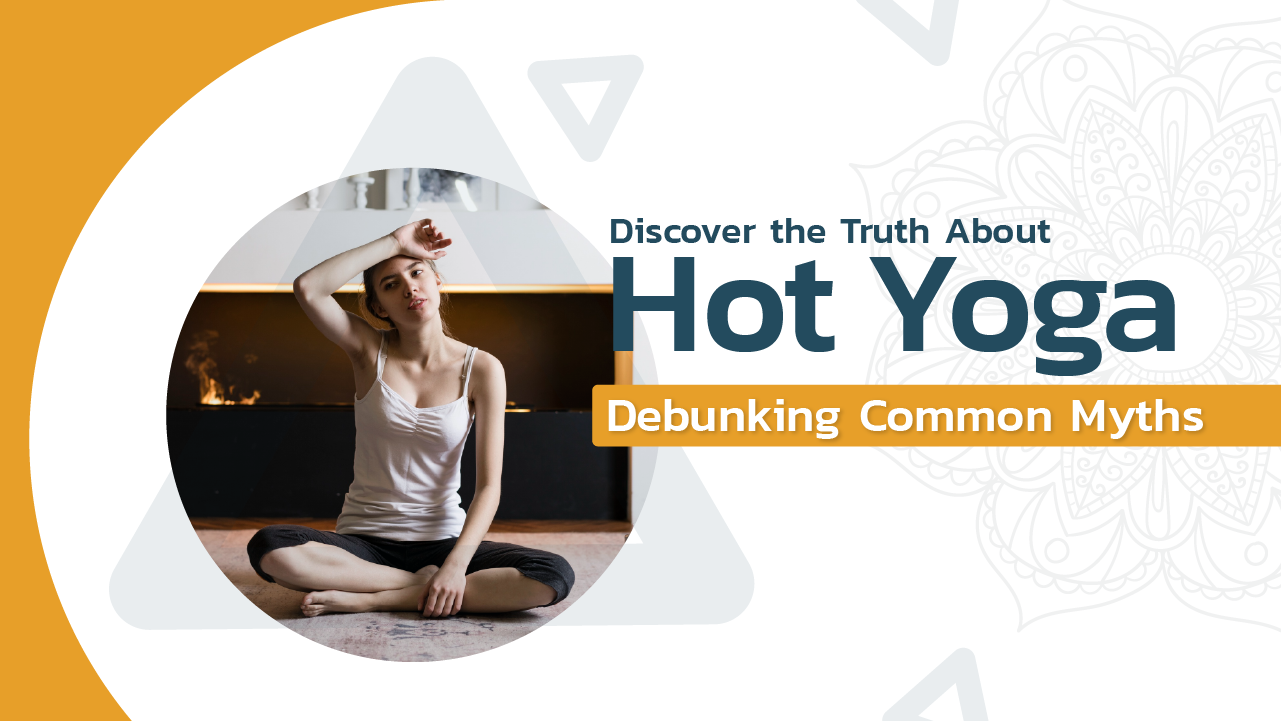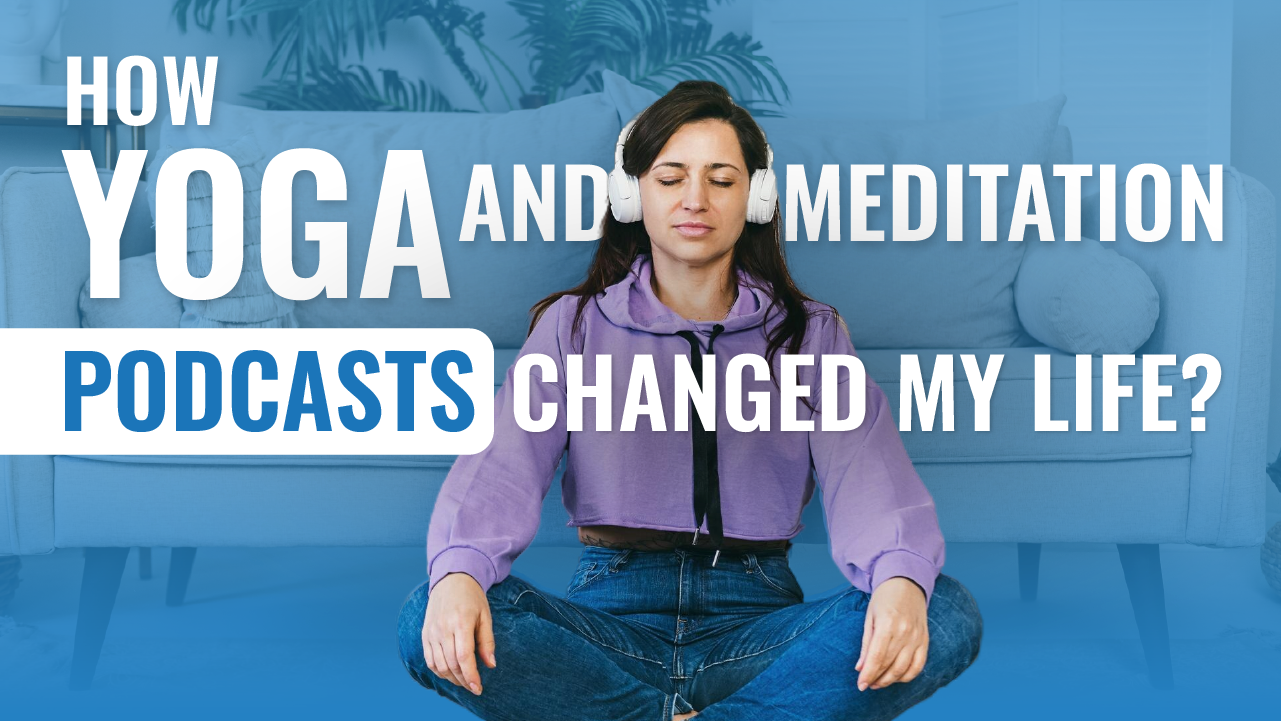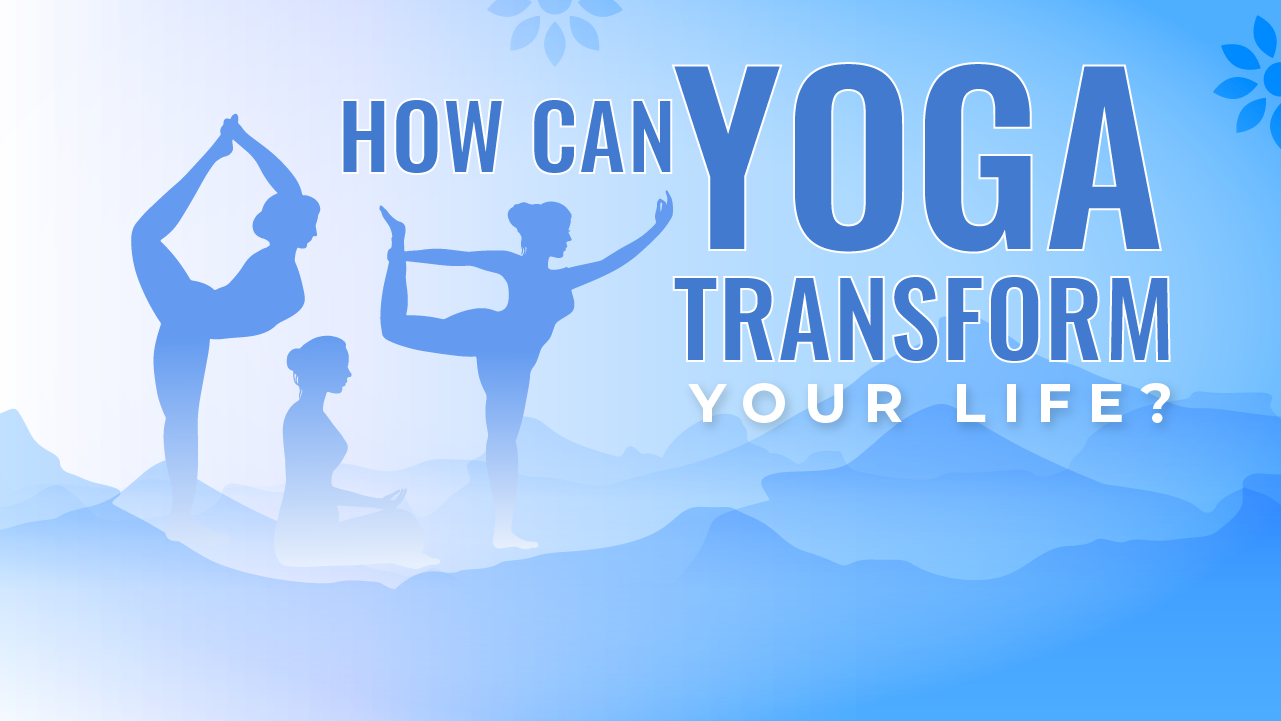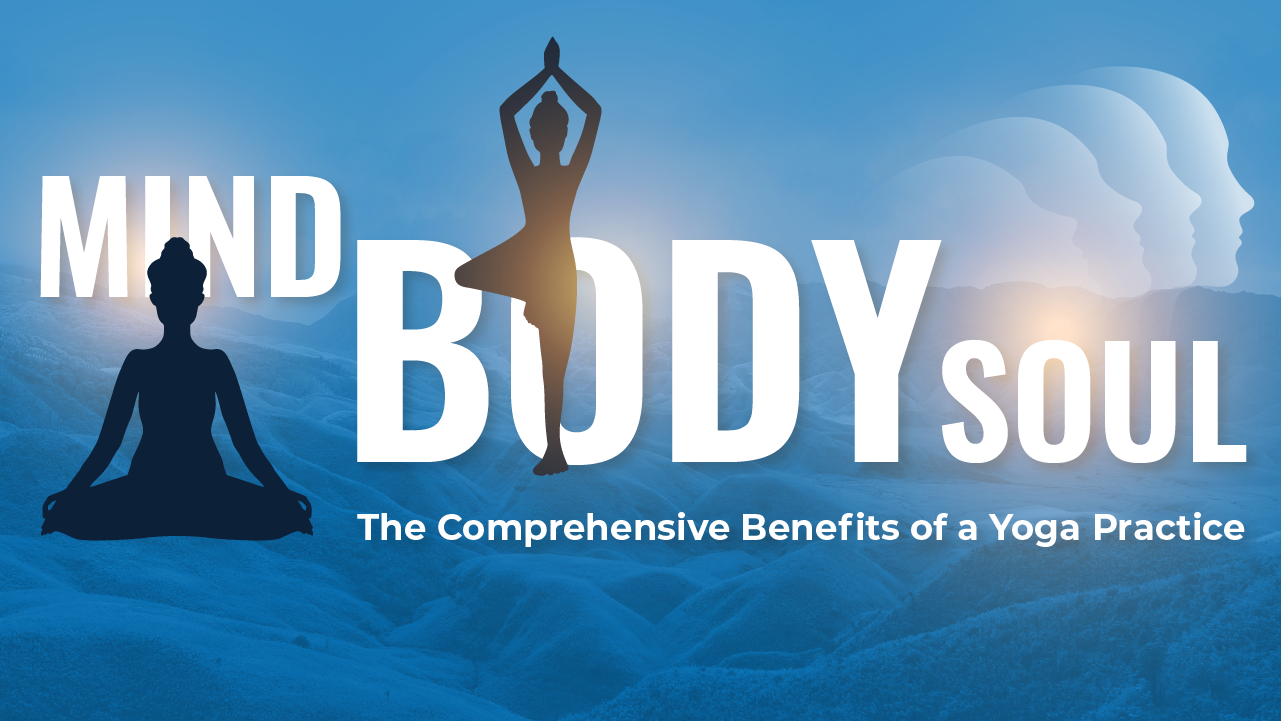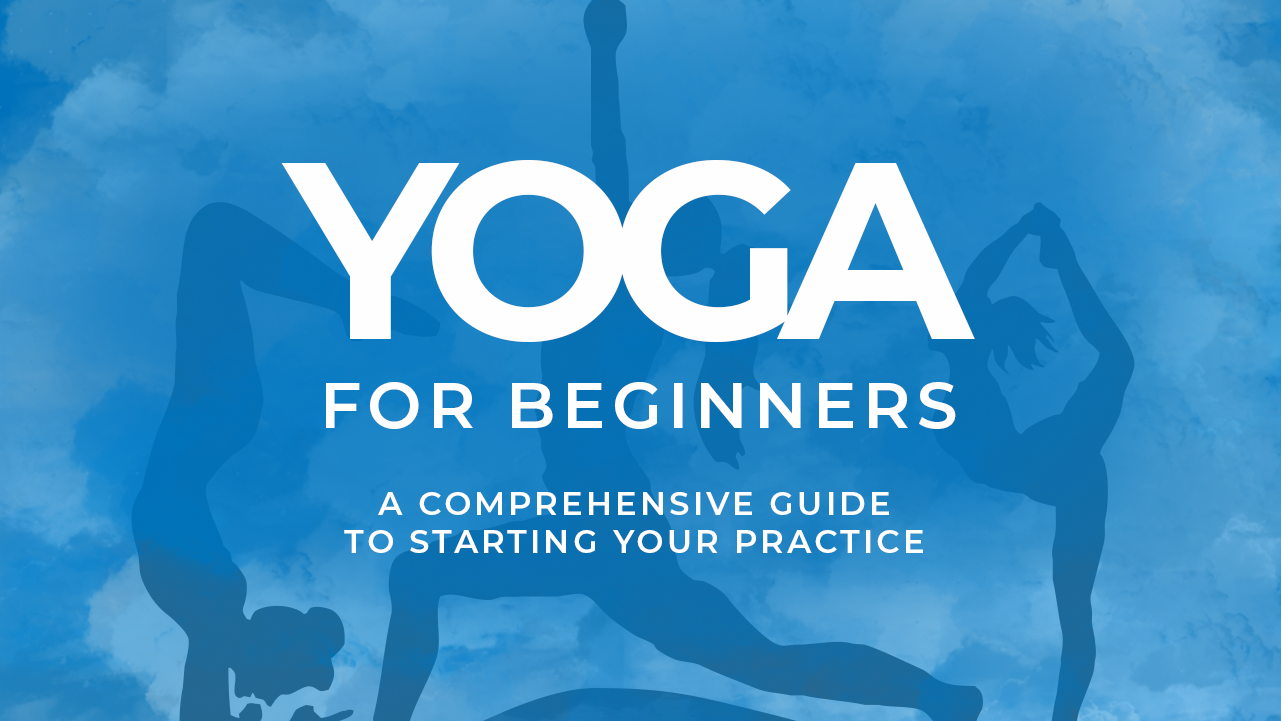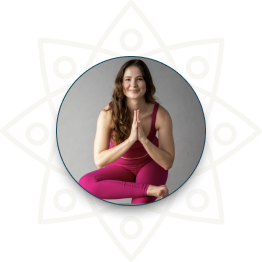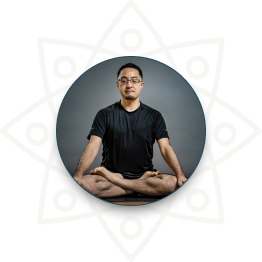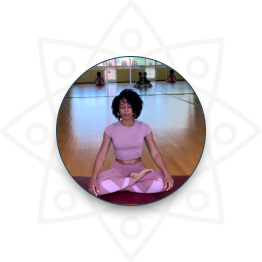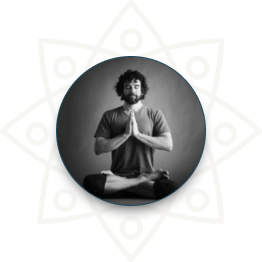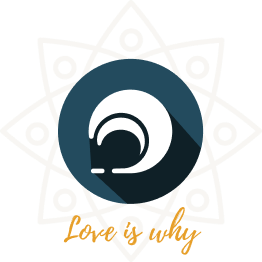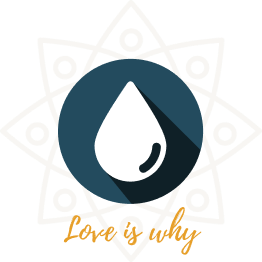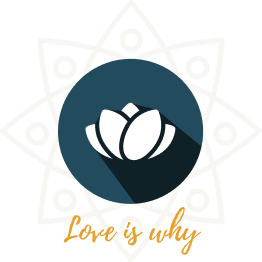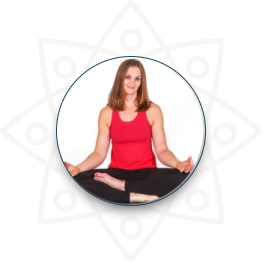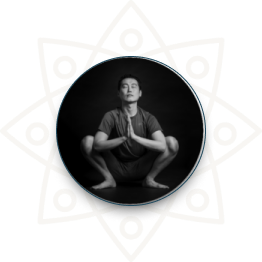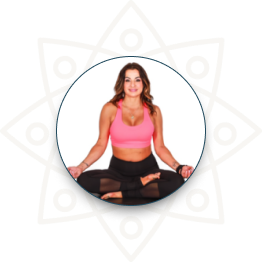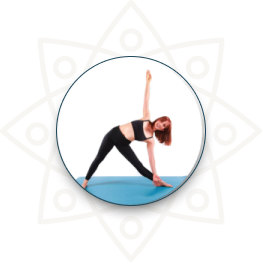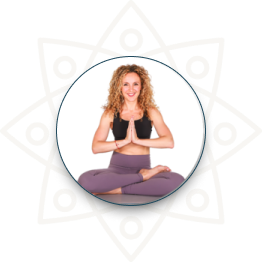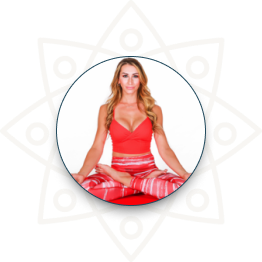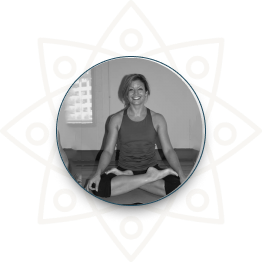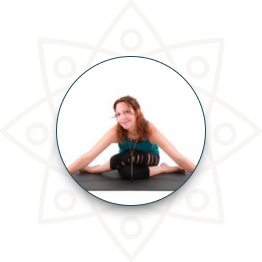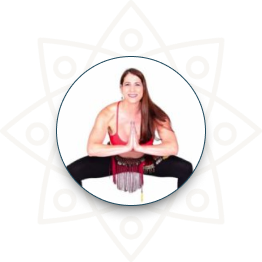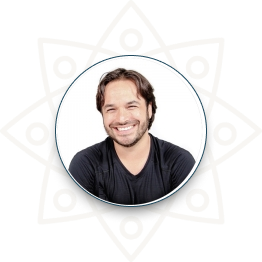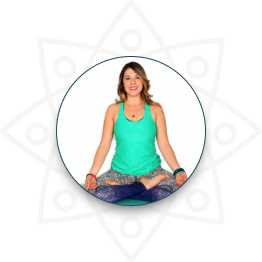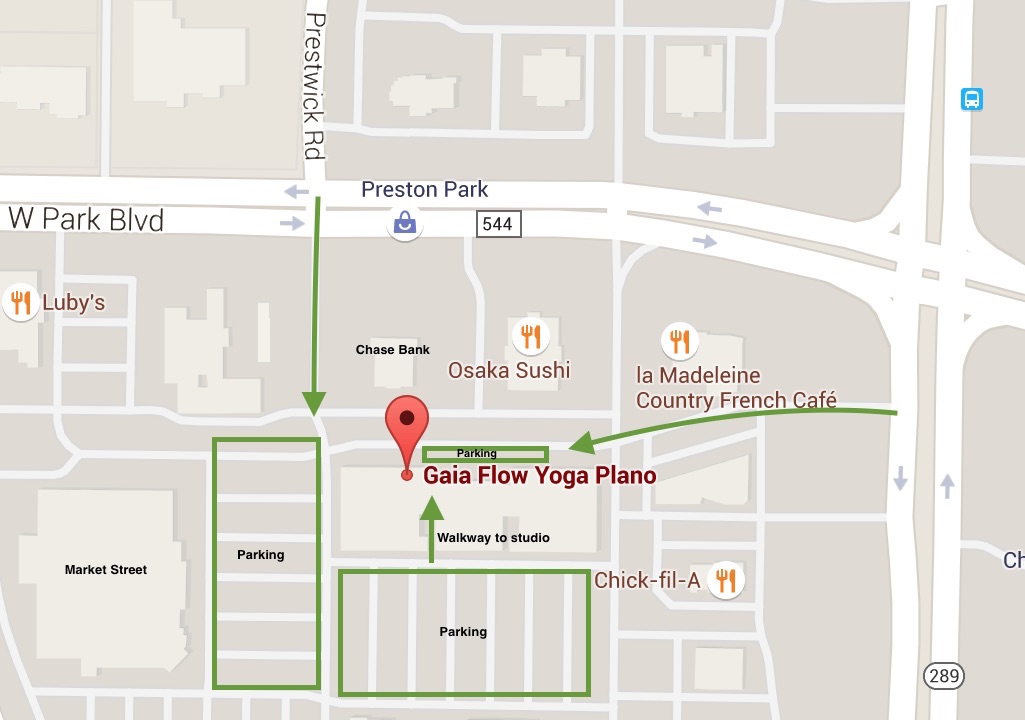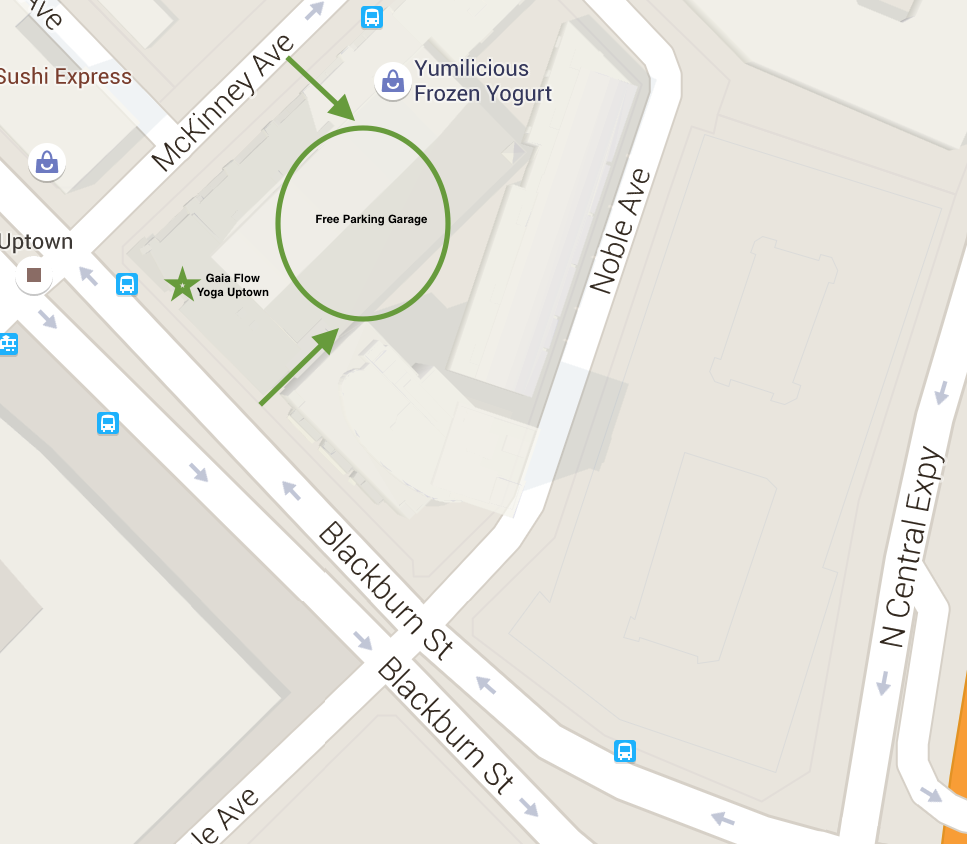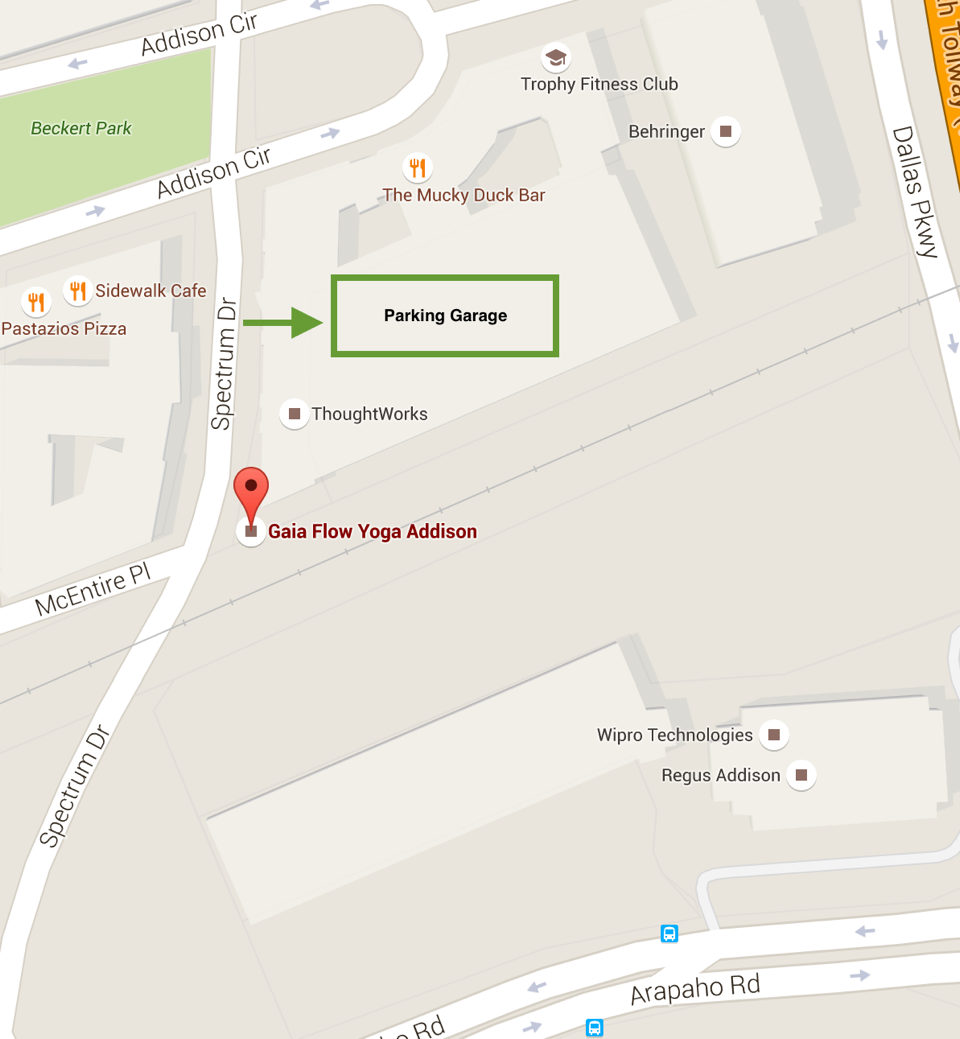Blogs
Mindful Breathing: A Key Component of Yoga for Managing Anxiety and Stress
Imagine standing at the edge of a serene forest, surrounded by towering trees, their leaves rustling gently in the wind. With each inhale, you draw in the crisp, refreshing air; with each exhale, you release the tension that has been weighing you down. This is the essence of mindful breathing—a practice that not only calms the mind but also anchors us to the present moment, fostering a sense of peace amid chaos. Incorporating mindful breathing into your yoga practice can transform the way you navigate life’s challenges. It empowers you to become more aware of your emotions and reactions, allowing you to respond to stress and anxiety with grace instead of overwhelm. Join us as we delve into the art of mindful breathing and discover how this powerful tool can help you cultivate tranquility and resilience in an ever-demanding world. Definition of Mindful Breathing Mindful breathing is the intentional practice of focusing your awareness on the act of breathing. This technique encourages individuals to observe their breath without judgment, noticing each inhalation and exhalation. By bringing attention to the breath, we create a bridge between our mind and body, fostering a deeper connection to the present moment. This practice can be as simple as sitting quietly and paying attention to the natural rhythm of your breath or integrating specific breathing techniques into a yoga session. How does it differ from regular breathing? While we all breathe naturally, most of us go through our days without giving it much thought. Regular breathing often becomes shallow or uneven, especially during stressful moments. In contrast, mindful breathing involves a conscious effort to deepen and regulate each breath. It encourages slow, rhythmic inhalations and exhalations, promoting a sense of calm and relaxation. This awareness allows us to notice when our breath becomes quickened by anxiety or stress, allowing us to take a step back and center ourselves. The Physiological and Psychological Benefits of Mindful Breathing Physiological Benefits: Reduced Heart Rate: Slow, deep breaths can help lower heart rates, promoting a sense of calm. Decreased Blood Pressure: Mindful breathing activates the parasympathetic nervous system, which helps reduce blood pressure and promotes relaxation. Improved Lung Capacity: Focused breathing exercises can enhance lung function and increase oxygen intake, which is vital for overall health. Psychological Benefits: Anxiety Reduction: By engaging in mindful breathing, individuals can lessen feelings of anxiety and stress, leading to a more balanced emotional state. Enhanced Focus and Clarity: Mindful breathing can sharpen mental clarity and improve concentration, making it easier to tackle daily challenges. Emotional Regulation: This practice helps individuals become more aware of their emotional responses, enabling them to manage their reactions more effectively. Incorporating mindful breathing into your daily routine can serve as a powerful tool for enhancing overall well-being, creating a sanctuary of calm in the midst of life’s demands. The Connection Between Breath and Emotions Breathing is one of the few autonomic functions that we can consciously control, making it a powerful tool for influencing our physical and emotional states. The breath is intricately linked to the autonomic nervous system, which regulates involuntary body functions such as heart rate, digestion, and respiratory rate. This system consists of two primary branches: the sympathetic nervous system (often referred to as the "fight or flight" response) and the parasympathetic nervous system (known as the "rest and digest" response). When we experience stress or anxiety, our breathing often becomes shallow and rapid, activating the sympathetic nervous system and preparing our bodies to react to perceived threats. Conversely, deep, mindful breathing stimulates the parasympathetic nervous system, promoting relaxation and reducing feelings of tension. This shift helps to calm the body and mind, illustrating the profound impact that our breath has on our overall state of being. Role of Breath in Regulating Emotions The act of breathing serves as a barometer for our emotional state. When we’re calm and centered, our breath is usually slow and deep; when we’re anxious or stressed, it tends to become rapid and shallow. By consciously altering our breath, we can influence our emotional landscape. Mindful Breathing and Emotional Awareness: Practicing mindful breathing increases our awareness of how our emotions manifest physically. By tuning into our breath, we can identify tension or discomfort in our bodies that may indicate underlying emotional states. This awareness enables us to respond to emotions with intention rather than reflexive reactions. Emotional Release: Engaging in mindful breathing can help release pent-up emotions. As we exhale deeply, we can visualize letting go of negative thoughts, stress, or anxiety, creating space for more positive emotions to flow in. Importance of Starting and Ending Yoga Sessions with Mindful Breathing Starting and ending your yoga practice with mindful breathing creates a sacred space for introspection and connection. Beginning with a few moments of deep, intentional breathing helps to center the mind and body, allowing practitioners to release distractions and focus on their practice. It sets a positive tone for the session, encouraging a heightened awareness of both breath and movement. Concluding with mindful breathing is equally crucial, as it allows the body to integrate the benefits of the practice. This closing ritual helps transition from the meditative state back to daily life, promoting a sense of calm and mindfulness that can carry over beyond the mat. How to Incorporate Mindful Breathing in Various Yoga Poses? Integrating mindful breathing into your yoga poses can enhance both the physical and mental aspects of your practice. Here are some tips: Inhale and Exhale with Movement: Sync your breath with each movement. For example, inhale while extending your arms overhead in Mountain Pose and exhale as you fold forward into Forward Bend. Use Breath to Deepen Poses: Inhale to lengthen the spine and create space, and exhale to deepen into a pose. In Downward Dog, inhale as you press your heels down and exhale to relax your neck and shoulders. Focus on Breath Awareness: While holding a pose, such as Warrior II, maintain awareness of your breath. Notice the sensations in your body…
Building Friendships Through Yoga: The Power of Community Connection
Picture this: you walk into a yoga studio for the first time, unsure what to expect. The soft glow of candles, the soothing scent of lavender, and the gentle hum of conversation surround you. As you roll out your mat, you notice the people around you—a mix of different faces, ages, and backgrounds. Yet, as the class begins and you move in unison through each pose, a silent connection forms. Yoga, often seen as a personal journey of self-discovery, has an incredible way of bringing people together. Beyond the stretches and deep breaths, it’s a space where friendships blossom, and where a sense of belonging grows stronger with every class. In a world that often feels disconnected, yoga offers a sanctuary—not just for your mind and body, but for the heart as well. Unlike many group fitness activities focusing on competition or individual performance, yoga classes foster a unique social environment rooted in mindfulness and mutual support. The essence of yoga—combining movement, breath, and mental focus—creates a sense of togetherness that goes beyond the physical. In a yoga class, participants move in unison, flowing through poses and synchronizing their breath. This shared rhythm forms an invisible connection, a collective energy that enhances the experience. Unlike in high-intensity workouts where the focus is solely on personal achievement, yoga encourages you to be present not just with yourself, but with others around you. The peaceful atmosphere allows people to feel comfortable and less self-conscious, opening the door to deeper connections. The act of collective mindfulness in yoga also plays a powerful role. As each participant focuses on their breath and body, there’s an unspoken understanding that everyone is going through a similar process—facing challenges, finding calm, and seeking balance. This shared journey, even in silence, creates a bond between participants. In this space, the absence of competition makes room for mutual support, empathy, and connection. Breaking Down Barriers: How Yoga Classes Build Friendships One of the most powerful aspects of yoga is its ability to break down social barriers and create meaningful connections between people from all walks of life. Unlike many activities that can feel exclusive or competitive, yoga welcomes everyone, creating a space where diversity is celebrated and friendships are formed organically. Inclusivity in Yoga: Yoga classes are incredibly inclusive, often attracting people of all ages, skill levels, and backgrounds. Whether you're a seasoned yogi or just starting, the shared experience of practice levels the playing field. The beauty of yoga lies in its adaptability—every pose can be modified to suit individual needs, making it accessible to everyone. This inclusivity fosters a welcoming environment where people from different cultures, professions, and life experiences can connect. The diversity within yoga classes enriches the experience, allowing participants to meet new people and form friendships that they might not have found elsewhere. Non-Competitive Nature: Unlike many fitness activities that focus on performance, rankings, or competition, yoga is deeply rooted in self-improvement. In a yoga class, there’s no pressure to outperform anyone else—everyone is encouraged to listen to their body and progress at their own pace. This non-competitive atmosphere creates a sense of camaraderie rather than rivalry. Instead of comparing abilities, participants often support and encourage one another, which helps build trust and mutual respect. The absence of competition allows genuine connections to grow, as people feel more open and comfortable sharing their practice without fear of judgment. Vulnerability and Trust: Yoga invites participants to be vulnerable—whether struggling with a challenging pose, embracing stillness during meditation, or simply showing up as they are. This vulnerability, when shared with others, creates an environment of trust. When people see each other working through the same struggles or celebrating small victories, naturally form a deeper connection. The practice of yoga encourages self-reflection and inner growth, and as participants open up emotionally and mentally, they become more open to forming meaningful relationships. Over time, this shared vulnerability builds a strong foundation for lasting friendships. By breaking down social barriers, promoting inclusivity, and creating a non-competitive environment, yoga classes offer more than just physical benefits—they provide a space for genuine human connection and lasting friendships. The Impact of Yoga Studios and Communities on Community Building Yoga studios play a pivotal role in fostering connections and building a sense of community. They are more than just spaces for physical practice—they are hubs for friendship, personal growth, and collective wellness. By creating an environment where people feel welcomed and supported, yoga studios help participants connect in meaningful ways. Beyond regular classes, yoga studios offer a variety of events that deepen connections and help build a strong sense of community. Workshops, retreats, and social gatherings provide opportunities for participants to bond over shared experiences and interests. Workshops allow students to dive deeper into specific aspects of yoga, offering a more intimate setting to interact with others while expanding their practice. The smaller, focused groups create a collaborative learning environment where friendships often blossom. Yoga retreats take the connection even further. By spending several days immersed in yoga, mindfulness, and relaxation, participants form lasting bonds with each other. The shared experience of stepping away from the stresses of daily life to focus on personal well-being creates a special sense of camaraderie that often continues long after the retreat ends. Social gatherings like community potlucks, post-class tea sessions, or special celebrations give students a chance to interact outside of a formal class setting. These events encourage deeper conversations and connections, allowing participants to get to know each other beyond their yoga practice. Through these experiences, yoga studios become more than places to exercise—they transform into vibrant communities where friendships are cultivated, and connections are nurtured. By creating a space where people can grow individually and collectively, yoga studios are essential in fostering long-lasting relationships that enrich participants’ lives beyond the mat. Benefits of Building Friendships Through Yoga Emotional Support: Having friends in yoga classes provides emotional support, creating a nurturing environment where you can share challenges and triumphs. These friendships help maintain motivation, making…
From Flexibility to Mindfulness: The Comprehensive Benefits of Yoga Workshops
In a world where we’re constantly bombarded with distractions, stress, and a never-ending to-do list, finding balance can feel like chasing a mirage. Yet, what if the key to unlocking physical vitality and mental clarity lay within something as simple as attending a yoga workshop? Yoga workshops are more than just stretching or striking impressive poses. They are immersive experiences designed to nurture your body, quiet your mind, and help you reconnect with yourself on a deeper level. Whether you're looking to touch your toes with ease or quiet that inner chatter, yoga workshops offer benefits that extend beyond the mat. In this blog, we’ll explore how these transformative sessions can boost your flexibility, enhance mindfulness, and promote a well-rounded sense of well-being. Ready to discover the full potential of yoga? Physical Benefits of Yoga Workshops Flexibility and Strength: One of the most noticeable benefits of yoga workshops is the improvement in flexibility. With guided poses and stretches, participants gradually enhance muscle flexibility and joint mobility, reducing stiffness and increasing their range of motion. Beyond flexibility, yoga is also a powerful tool for building strength. Regular practice, particularly poses like plank and downward dog, strengthens the core muscles, providing better support for the spine and improving overall posture. Balance and Coordination: Yoga workshops place a strong emphasis on balance and motor control. Through dynamic balancing postures, such as tree pose and warrior III, participants develop stability, which not only enhances physical grace but also helps prevent injuries. Improved coordination and proprioception lead to better performance in daily activities and other physical pursuits. Improved Respiratory and Cardiovascular Health: A vital component of yoga is pranayama or controlled breathing techniques. Yoga workshops often introduce these techniques to expand lung capacity, improve oxygen intake, and enhance respiratory efficiency. The conscious control of breath not only calms the nervous system but also supports cardiovascular health by improving blood circulation, reducing blood pressure, and maintaining a steady heart rate. When practiced consistently, these techniques can result in better cardiovascular endurance and a healthier respiratory system. Mental Benefits of Yoga Workshops Stress Reduction and Relaxation: One of the most profound impacts of yoga workshops is the reduction of stress. These sessions often integrate deep relaxation techniques such as guided meditation, pranayama, and slow, mindful movements. By focusing on deep, controlled breaths, participants activate the parasympathetic nervous system, which helps lower cortisol levels—the body’s stress hormone. Scientific studies have shown that regular yoga practice can significantly reduce anxiety and tension, allowing participants to leave the workshop feeling calm, centered, and refreshed. Mindfulness and Presence: At the heart of every yoga workshop is the cultivation of mindfulness. Through focused breathing and meditation, yoga encourages participants to stay present in the moment, letting go of distractions and mental chatter. This practice of being fully aware of your body and breath fosters a deep sense of mental clarity. The result? A quieter mind, greater self-awareness, and the ability to respond to life’s challenges with more composure. Over time, this mindfulness extends beyond the mat, helping individuals remain grounded and focused in their daily lives. Emotional and Spiritual Growth Emotional Balance and Mental Clarity: Yoga workshops provide a nurturing space for participants to connect with their emotions, fostering emotional resilience and introspection. Through mindful movement and breathwork, participants gain insights into their emotional states, learning to observe rather than react impulsively. This heightened self-awareness helps individuals regulate their emotions more effectively, promoting a sense of emotional balance. Over time, yoga can bring about a deep sense of mental clarity, allowing participants to approach life’s ups and downs with greater calm and stability. Spiritual Connection: Beyond the physical and mental benefits, yoga is also a spiritual practice for many. Yoga workshops often create an environment where individuals can explore a deeper connection to themselves and the world around them. Whether it’s through guided meditations, sound healing techniques, or simply the quiet reflection that comes with practice, yoga can serve as a path to spiritual awareness. Participants often report feeling a greater sense of inner peace, purpose, and connection to something larger than themselves. This spiritual growth is one of the most transformative aspects of yoga, helping individuals cultivate a lasting sense of fulfillment and harmony. Social and Community Aspects Building Connections with Like-Minded Individuals: Yoga workshops offer more than just a personal journey—they create opportunities to connect with like-minded individuals. The communal atmosphere fosters a sense of belonging as participants share their learning experiences, challenges, and progress. The group energy in a yoga workshop can be incredibly uplifting, as everyone supports one another’s journey toward well-being. This sense of community not only enhances the experience but also helps individuals form meaningful, supportive relationships both on and off the mat. Accountability and Motivation: Practicing yoga in a group setting can significantly boost motivation. Group dynamics encourage participants to stay committed and consistent in their practice, as the presence of others fosters accountability. Yoga workshops create a positive environment where participants feel motivated to show up, push through challenges, and celebrate small victories together. This shared commitment helps reinforce personal growth, ensuring that participants stay on track with their physical, mental, and spiritual goals. Tailored Workshops for All Levels Beginners to Advanced Practitioners: Yoga workshops are designed to cater to practitioners of all levels, from beginners to advanced yogis. Whether you’re just starting your yoga journey or looking to deepen an existing practice, these workshops offer tailored sessions that meet individual needs. Beginners can enjoy foundational classes that focus on building basic flexibility and strength, while more advanced practitioners can challenge themselves with complex poses and techniques. Specialized workshops—such as those for stress relief, flexibility improvement, or prenatal yoga—allow participants to target specific goals and tailor their experience accordingly. Personalized Guidance from Certified Instructors: One of the key advantages of yoga workshops is the personalized guidance from certified instructors. Participants benefit from one-on-one attention, ensuring proper alignment, form, and technique throughout the practice. This individualized support helps prevent injuries and maximizes the physical…
Yoga Nidra: The Ultimate Yoga Practice for Deep Relaxation and Stress Relief
In today’s fast-paced world, stress has become an unavoidable part of daily life. In fact, according to the American Psychological Association, nearly 80% of adults report feeling stressed regularly, and this chronic stress can lead to severe health issues, from insomnia to heart disease. Enter Yoga Nidra, a powerful practice designed to combat these overwhelming pressures. Often referred to as "yogic sleep," Yoga Nidra is a deeply restorative meditation that can help you access a profound state of relaxation in just 30 minutes—offering the equivalent rest of up to 4 hours of sleep. Whether you're seeking relief from anxiety, better sleep, or a way to unwind, Yoga Nidra might just be the ultimate solution to help you reset and recharge. What is Yoga Nidra? Yoga Nidra, often called "yogic sleep," is a guided meditation practice that allows you to enter a state of deep relaxation and conscious rest. Unlike traditional yoga, which focuses on physical postures (asanas), or seated meditation that requires mental concentration, Yoga Nidra is practiced lying down in a completely relaxed state. Its goal is not to move the body but to still the mind while staying aware, bridging the gap between wakefulness and sleep. This ancient practice has its roots in the teachings of Tantra and Sankhya philosophy and has been used for thousands of years to bring mental clarity and emotional balance. While it shares some similarities with traditional meditation, the key difference lies in the state it induces: Yoga Nidra guides you through different stages of consciousness, allowing the body to sleep while the mind stays alert. This "hypnagogic" state—the transition between wakefulness and sleep—enables deep healing and relaxation. It is here that profound rest is achieved, reducing stress and tension at a deeper level than regular rest or sleep can provide. By entering this state of conscious rest, you experience a journey inward, relaxing not just the body but also calming the mind and emotions. This process taps into the subconscious mind, helping to release deep-seated tensions, heal emotional trauma, and restore overall well-being. How Yoga Nidra Promotes Deep Relaxation During a Yoga Nidra session, the body and mind respond in ways that create profound relaxation, far beyond typical rest. As you lie down in a comfortable position, the session begins by guiding you through a systematic journey of awareness. This includes body scans, breath observation, and mental imagery, which gradually brings you into a state of complete stillness and calm. Stages of Relaxation: From Physical Stillness to Mental Calm Yoga Nidra starts by relaxing the physical body. In the initial phase, you systematically bring awareness to different parts of the body, encouraging them to release tension. This stage alone helps melt away physical stress, similar to the relaxation you feel just before falling asleep. Next, the practice moves to a more subtle level, working with the mind. As the session continues, you shift from physical relaxation to mental calm. Thoughts begin to slow down, and mental chatter is significantly reduced, allowing the mind to rest. This stage creates an inner calm, which is where deeper emotional and psychological healing can occur. Effects on the Nervous System: Activating the Parasympathetic Response One of the most powerful effects of Yoga Nidra is its impact on the nervous system. The practice activates the parasympathetic nervous system—also known as the "rest and digest" mode. This is in contrast to the sympathetic nervous system, which is responsible for the "fight or flight" response, commonly triggered by stress. By engaging the parasympathetic response, Yoga Nidra lowers heart rate, reduces blood pressure, and encourages the release of stress-reducing hormones like serotonin. However, while Yoga Nidra offers deep relaxation benefits, some people may find it challenging to stay alert during the session, as the state between wakefulness and sleep can lead to drowsiness or even falling asleep unintentionally. This can limit the full psychological benefits of the practice, as it’s designed to maintain conscious awareness. Overall, Yoga Nidra promotes holistic relaxation that touches the body, mind, and nervous system, making it an ideal practice for those seeking both physical rest and emotional healing. Stress Relief Through Yoga Nidra Yoga Nidra is a powerful tool for reducing stress, supported by both ancient wisdom and modern science. One of its key benefits is the reduction of cortisol, the primary stress hormone that, when elevated, contributes to anxiety, tension, and even long-term health problems like heart disease. Scientific studies have shown that regular Yoga Nidra practice significantly lowers cortisol levels, helping the body and mind return to a state of balance. Scientific Evidence: Lowering Stress Hormones A study published in the International Journal of Yoga found that participants who practiced Yoga Nidra for just 30 minutes a day experienced a marked reduction in cortisol levels compared to those who practiced other forms of relaxation. This decrease in cortisol is linked to reduced feelings of stress and tension, helping individuals feel more calm and centered. Mental Health Benefits: Easing Anxiety, Depression, and Emotional Fatigue Beyond its physiological effects, Yoga Nidra is also a potent remedy for mental health challenges like anxiety, depression, and emotional fatigue. The practice’s structured approach to relaxation and visualization allows the mind to release deep-seated emotions and mental patterns that contribute to chronic stress. Studies have also shown that Yoga Nidra can reduce symptoms of generalized anxiety disorder and post-traumatic stress disorder (PTSD), providing relief to those who may struggle with traditional therapy methods. Moreover, people often report feeling rejuvenated and emotionally balanced after just a few sessions. The guided nature of the practice ensures that practitioners feel supported throughout, making it accessible even to those new to meditation. The Long-Term Benefits of Regular Yoga Nidra Practice Consistent practice of Yoga Nidra offers profound long-term benefits that extend beyond the immediate relaxation it provides. By regularly engaging in this deeply restorative practice, you can experience significant improvements in your physical, mental, and emotional well-being. Improved Sleep Quality: Yoga Nidra helps regulate sleep patterns by deeply relaxing the nervous system. This…
Why Group Yoga Classes Are Better Than Practicing Alone?
Have you ever found yourself rolling out your yoga mat at home, only to get distracted by a phone notification, or maybe your mind just wanders off? While solo yoga sessions can be peaceful, there’s something undeniably magical about practicing in a room full of people, all moving in harmony. The hum of collective breath, the shared determination to hold a pose just a few seconds longer, and the sense of community fostered through shared energy can elevate your practice to a whole new level. If you’ve been wondering whether to join a group class or stick with your solo flow, this is your nudge to explore the transformational power of group yoga! Your mat might be your personal space, but in a group, the experience is truly limitless. Enhanced Motivation and Accountability One of the biggest challenges in yoga—or any practice—is maintaining motivation over time. This is where the power of community comes in. In a group yoga class, the energy of those around you acts as a natural boost, encouraging when you need it most. Seeing others flow through poses can inspire you to push past your limits, and even on tough days, the collective spirit helps you stay present and focused. Sticking to a routine also becomes easier with the structure of a group setting. Knowing that you’ll be practicing alongside familiar faces creates a sense of commitment, making it harder to skip a session or fall behind. Whether it's shared goals or simply showing up together, the accountability in a group yoga class keeps you grounded and consistent in your practice. When everyone is moving towards the same intention, it becomes a shared journey of growth and wellness. Improved Technique with Instructor Guidance One of the greatest advantages of joining a group yoga class is the access to real-time feedback from a trained instructor. When practicing alone, it’s easy to overlook the subtleties of proper alignment or fall into habits that could lead to injury. In a group setting, however, instructors can observe your form and offer corrections to ensure you’re performing each pose safely and effectively. Beyond just avoiding injury, this guidance helps you refine your technique and deepen your practice. Whether you’re learning a new pose or aiming to master a challenging one, having an experienced teacher by your side builds confidence. With expert tips and personalized adjustments, you’ll find yourself progressing faster and practicing with greater ease. Deeper Connection and Sense of Belonging Yoga is more than just a physical practice; it’s an opportunity to connect with yourself and others. In a group class, the sense of camaraderie and shared energy can be truly transformative. There’s something powerful about moving in unison with others, flowing through poses together, and breathing as one. This collective energy fosters a sense of belonging that solo practice often can’t replicate. Group yoga also provides the space to cultivate friendships through a common practice. Whether it’s a casual conversation before class or a shared sense of accomplishment after mastering a difficult pose, these interactions build bonds that go beyond the mat. On a deeper level, the communal aspect of yoga enhances mental and emotional well-being. The support of the group, coupled with the calm, meditative environment, makes it easier to let go of stress and embrace inner peace. In a world that can often feel isolating, group yoga reminds us that we’re all in this together. Positive Energy and Collective Focus The energy in a group yoga class is palpable, often more invigorating than what you might experience alone. When you practice in a group setting, the collective energy of everyone in the room creates a powerful and uplifting atmosphere. This shared vibrancy can enhance your motivation and deepen your practice, making each session more dynamic and inspiring. During meditative practices, the collective focus of the group is particularly potent. As everyone tunes into the same intention, it’s easier to tap into a state of deep concentration and mindfulness. The synchronized breath and movement foster a shared calmness that amplifies the meditative experience, allowing you to achieve a deeper state of relaxation and mental clarity. Group breathing exercises further exemplify this collective power. When everyone breathes together, the rhythm and cadence of the group’s breath can synchronize, creating a harmonious flow of energy that enhances the sense of tranquility and connection. This shared experience not only promotes a stronger practice but also leaves you feeling rejuvenated and centered. Overcoming Self-Limitations One of the most powerful aspects of practicing yoga in a group setting is the opportunity to push past your personal boundaries by observing and learning from others. In a class, you see fellow practitioners navigating their challenges and achieving milestones, which can inspire you to expand your limits. Witnessing others succeed in poses or techniques you find difficult can motivate you to push through your obstacles and explore new possibilities. The achievements and progress of your peers serve as a testament to what’s possible, encouraging you to strive for your own personal growth. Whether it’s a colleague holding a challenging pose with grace or a friend mastering a new technique, these successes can be powerful reminders that growth is within reach. This collective progress not only fuels your ambition but also fosters a sense of camaraderie and shared success. Moreover, the group setting inherently creates a supportive environment where encouragement and positive reinforcement thrive. As you work alongside others, the atmosphere of mutual support helps you feel more confident and less isolated in your journey. This nurturing space can be crucial in overcoming self-imposed limitations, as it cultivates a mindset that embraces growth, perseverance, and collective achievement. Fun and Engaging Experience Yoga in a group setting often brings an element of fun and engagement that can enhance your overall experience. The social aspect of practicing with others adds a layer of enjoyment that solo sessions sometimes lack. Whether it’s the camaraderie of sharing a laugh before class or the collective focus during challenging poses, the social interaction…
The Power of Breath: How to Synchronize Breathing with Yoga Poses
“Breath is the bridge which connects life to consciousness, which unites your body to your thoughts.” — Thich Nhat Hanh. This quote by the revered Buddhist monk Thich Nhat Hanh beautifully encapsulates the essence of breathing in yoga. In the practice of yoga, breath is not merely a function of the body but a vital tool that enhances our awareness and deepens our practice. Synchronizing breath with movement transforms a sequence of postures into a fluid, meditative dance, guiding us into a state of balance and presence. Whether you are a seasoned yogi or a curious beginner, understanding the role of breath in yoga will enrich your experience and deepen your connection with both your body and mind. The Role of Breath in Yoga Physiological Benefits: Breath is the foundation of life, and in yoga, its role is paramount. Controlled breathing, or pranayama, has profound physiological benefits. When you engage in deliberate breathwork, you improve oxygen flow throughout your body, which is essential for optimal function. Deep, rhythmic breathing enhances lung capacity, allowing for more efficient oxygen exchange and better oxygenation of your cells. This increased oxygen flow supports overall physical health, boosts energy levels, and aids in faster recovery from physical exertion. Moreover, controlled breathing plays a crucial role in reducing stress. By activating the parasympathetic nervous system, deep breathing helps lower cortisol levels, the hormone associated with stress. This creates a calming effect, helping to manage anxiety and promote relaxation. As you focus on your breath, you signal your body to enter a state of equilibrium, counteracting the fight-or-flight response that often accompanies daily stress. Mind-Body Connection: Breath awareness is a powerful tool for enhancing mindfulness and focus. When you consciously direct your attention to your breath, you anchor yourself in the present moment. This mindful awareness helps to quiet the mind, reducing the chatter of daily distractions and allowing you to fully engage in each yoga posture. By syncing your breath with your movements, you create a rhythmic flow that promotes mental clarity and a deeper connection to your practice. This connection between breath and movement also fosters a greater sense of body awareness. As you become more attuned to how your breath influences your movements, you develop a heightened sensitivity to your body’s needs and limits. This awareness helps you make more informed adjustments in your practice, leading to improved alignment, stability, and overall effectiveness. Energy Flow: In yoga, the concept of Prana, or vital energy, is central to the practice. Prana is believed to flow through the body's energy channels or nadis and is fundamental to maintaining balance and health. Breathing techniques are designed to harness and regulate this vital energy, ensuring a smooth and harmonious flow throughout the body. Proper breathing helps to stimulate and balance the flow of Prana, enhancing your vitality and overall sense of well-being. When you practice deep, mindful breathing, you facilitate the movement of energy, which can help clear blockages and promote a sense of inner harmony. This enhanced energy flow supports not only your physical performance but also your mental and emotional resilience, making your yoga practice a more enriching and holistic experience. Synchronizing Breath with Movement Synchronizing breath with movement in yoga creates a harmonious flow between your body and mind. Inhaling as you expand or lengthen and exhaling as you contract or settle helps to maintain a smooth, rhythmic practice. This alignment enhances both the physical effectiveness of each pose and your overall mindfulness. Benefits of Synchronizing Breath and Movement Enhanced Practice Flow: Synchronizing breath with movement creates a seamless and fluid yoga practice. When your breath and movements are in harmony, transitions between poses become smoother, reducing the effort needed to shift from one posture to another. This flow not only makes your practice more efficient but also enhances its overall effectiveness. By maintaining a rhythmic breath, you create a meditative state that allows you to move through your sequence with grace and ease. Improved Posture and Alignment: Breathing in sync with your movements supports better posture and alignment. When you breathe deeply and mindfully, you engage your core muscles and maintain proper form throughout your practice. This alignment helps to distribute weight evenly and reduce strain on specific areas, lowering the risk of injury. For example, proper breathing can help you stabilize in challenging poses and keep your body balanced, leading to more effective and safer practice. Increased Mental Clarity and Relaxation: The practice of aligning breath with movement also enhances mental clarity and relaxation. As you focus on your breath, you shift your attention away from daily distractions and enter a state of mindfulness. This mental focus reduces stress, calms the mind, and fosters a deeper sense of relaxation. The rhythmic nature of synchronized breathing helps to create a peaceful mental space, allowing you to experience a greater sense of calm and clarity. Synchronizing breath and movement not only improves the physical aspects of your yoga practice but also enhances your mental well-being, making your practice both more effective and more enjoyable. Incorporating Breath Awareness into Your Routine To integrate breath awareness into your daily practice, start by dedicating a few minutes each day to mindful breathing. Before beginning your yoga session, take a moment to focus on slow, deep breaths, inhaling through your nose and exhaling fully. Practice this throughout your day—whether you’re sitting, walking, or doing any activity—to cultivate awareness. With time, breath control will become second nature, making it easier to apply during your yoga practice. Breathing Exercises Ujjayi Breath: Deep nasal breathing with a soft throat constriction to maintain focus. 4-4-6-2 Breathing: Inhale for 4, hold for 4, exhale for 6, hold for 2 to establish rhythm. Alternate Nostril Breathing: Inhale and exhale alternately through each nostril to balance energy. Guided Yoga Sequences Sun Salutations: Link each movement (reach, fold, extend) to your breath. Flowing Warrior: Transition between Warrior I, II, and III with inhale-exhale patterns. Cat-Cow Pose: Inhale into Cow Pose, exhale into Cat Pose for simple synchronization.…
Cultivate Emotional Balance- A Meditation Guide
In today’s world, where stress and emotional turmoil have become almost commonplace, finding a sense of calm and balance can feel like an elusive dream. We juggle multiple roles, face constant pressures, and often find ourselves overwhelmed by our own emotions. Yet, amidst this chaos, there lies a simple, ancient practice that has the power to transform our emotional landscape: meditation. Imagine being able to navigate life’s ups and downs with a steady mind and an open heart, where you’re not just reacting to situations, but responding with clarity and compassion. This is the gift of emotional balance—an inner harmony that meditation helps to cultivate. Whether you’re new to meditation or looking to deepen your practice, this guide will take you on a journey to understanding how meditation can become your ally in achieving emotional equilibrium, one mindful breath at a time. WHAT IS EMOTIONAL BALANCE? Emotional balance refers to the ability to manage and respond to your emotions in a way that promotes mental well-being and resilience. It’s the state where you experience your emotions without being overwhelmed, maintaining a sense of inner calm and clarity even amidst life’s ups and downs. Emotional balance is crucial because it enables you to handle stress more effectively, maintain healthy relationships, and approach challenges with a grounded perspective. However, achieving emotional balance is not always easy. Many people struggle with emotional imbalance due to various factors: Stress and Overwhelm: High-stress levels from work, relationships, or daily responsibilities can disrupt emotional stability. Unresolved Trauma: Past experiences and unresolved emotional issues can lead to recurring emotional turbulence. Negative Thought Patterns: Persistent negative thinking or self-criticism can skew emotional responses and contribute to feelings of imbalance. Life Transitions: Major life changes, such as moving, job changes, or personal loss, can trigger emotional instability and uncertainty. How Meditation Helps Cultivate Emotional Balance Meditation offers a variety of techniques that can significantly enhance emotional balance by promoting self-awareness, calm, and resilience. Here’s how different forms of meditation can support emotional stability: Mindfulness Meditation: Mindfulness meditation involves paying focused attention to the present moment without judgment. This practice encourages a heightened awareness of your thoughts, feelings, and bodily sensations as they arise. By anchoring your attention to the present, mindfulness meditation helps break the cycle of automatic emotional reactions, allowing you to respond to situations with greater clarity and calm. Benefits include reduced stress, improved emotional regulation, and increased overall well-being. Focus on Your Breath: Direct your attention to the sensation of your breath entering and leaving your body. This simple practice can help ground you in the present moment. Observe Without Judgment: Notice your thoughts and emotions as they come and go without labeling them as good or bad. This non-judgmental awareness can prevent you from becoming overwhelmed by them. Use Anchors: Engage with physical sensations or simple objects in your environment to help maintain your focus and stay anchored in the present. Loving-Kindness Meditation: Loving-kindness meditation, also known as Metta meditation, involves silently repeating phrases of goodwill and compassion towards yourself and others. This practice fosters a sense of warmth and connection, reducing negative emotions such as anger, resentment, and self-criticism. By cultivating an attitude of kindness and empathy, loving-kindness meditation can improve your relationships and enhance emotional resilience. Start with Yourself: Begin by sending loving-kindness to yourself, acknowledging your own needs and imperfections with compassion. Extend to Others: Gradually extend these feelings to loved ones, acquaintances, and even individuals with whom you have conflicts, fostering a broader sense of connection and empathy. Focusing on Breath: Breath awareness meditation centers on using your breath as a tool to calm the mind and stabilize emotions. By concentrating on the rhythm of your breathing, you can activate the body’s relaxation response, helping to manage stress and emotional turbulence. Body Scan Meditation: Body scan meditation involves systematically focusing your attention on different parts of your body, noticing any sensations or areas of tension. This practice highlights the connection between physical sensations and emotional states, helping you become more aware of how emotions manifest in the body. Start at the Feet: Begin by bringing your attention to your feet, gradually moving up through your legs, torso, arms, and head. Notice Sensations: Observe any areas of tension or discomfort without trying to change them. Simply acknowledging these sensations can help release physical and emotional stress. Relax and Release: As you focus on each body part, imagine breathing into any areas of tension, allowing them to soften and release with each exhale. Incorporating these meditation techniques into your daily routine can profoundly impact your emotional balance, offering tools to manage stress, enhance self-awareness, and cultivate a more compassionate and resilient mindset. Scientific Evidence Supporting Meditation for Emotional Balance Numerous scientific studies highlight the profound impact of meditation on emotional balance. Research has consistently shown that meditation practices can enhance emotional regulation, reduce stress, and improve overall mental health. Reduced Stress and Anxiety: Studies have demonstrated that mindfulness meditation can significantly lower levels of cortisol, the stress hormone. Participants in these studies report reduced anxiety and improved resilience to stress. Improved Emotional Regulation: Neuroscientific research shows that meditation can alter brain activity in areas related to emotional regulation. Functional MRI scans reveal increased activation in the prefrontal cortex, which is associated with better control over emotional responses. Enhanced Self-Awareness: Meditation fosters greater self-awareness, allowing individuals to recognize and understand their emotional patterns. This heightened awareness helps in managing and responding to emotions more effectively. Long-Term Benefits: Long-term meditation practice has been linked to enduring improvements in emotional health. Studies suggest that regular meditation can lead to lasting changes in brain structure and function, promoting ongoing emotional stability and resilience. These scientific insights underscore the efficacy of meditation as a tool for cultivating emotional balance, providing both immediate relief and long-term benefits for mental well-being. Challenges and How to Overcome Them Meditation can be transformative, but it's not without its challenges. Here’s how to navigate common obstacles and maintain a consistent practice: Restlessness and…
The Science of Yoga Sound Healing: How Vibrations Transform Your Mind and Body
Imagine lying in a serene yoga studio, the gentle hum of singing bowls filling the air as you sink deeper into relaxation. With each resonating note, you feel a wave of calm wash over you, as if the vibrations are tuning your body and mind to a harmonious frequency. This is the power of yoga sound healing—a practice that harnesses the ancient wisdom of sound vibrations to restore balance and well-being. In a world where stress and anxiety often dominate our daily lives, sound healing offers a profound way to reconnect with our inner selves. But what is it about these vibrations that affect us so deeply? In this blog, we’ll dive into the fascinating science behind yoga sound healing, exploring how these soothing sounds work to heal and transform both our minds and bodies. What is Sound Healing? Sound healing is an ancient practice that uses sound waves to bring the mind, body, and spirit into a state of harmony and balance. Originating from various cultures across the globe, sound healing has been used for centuries as a tool for physical and spiritual healing. Whether through the rhythmic beat of a drum in indigenous rituals or the melodic chants of mantras in Eastern traditions, sound has long been recognized for its transformative power. The Role of Vibrations At the heart of sound healing lies the concept of vibrations. Sound is essentially a vibration that travels through the air and into our ears, where it is then translated into signals our brain can understand. But sound doesn’t just affect our ears—it also influences our entire body. These vibrations can penetrate deeply into our tissues, influencing our cells and organs. This is where the concept of resonance comes into play. Resonance occurs when an external sound wave matches the natural frequency of a body part, amplifying its vibrations. This can help to re-tune parts of the body that may be out of balance, restoring harmony on a physical and energetic level. Different sounds and frequencies can have varying effects on the body and mind. Lower frequencies might induce a state of deep relaxation, while higher frequencies can energize and uplift. The science of sound healing taps into these resonant frequencies to promote healing, well-being, and spiritual awakening, making it a powerful complement to yoga practice. The Science Behind Sound Healing The science behind sound healing is rooted in the principles of physics and biology, where sound waves are understood as vibrations that travel through the air and interact with our bodies. These vibrations influence our physical and mental states by resonating with different parts of our body, from our brainwaves to our cells. When we experience sound healing, the frequencies emitted by instruments like singing bowls or gongs create sound waves that can alter our brainwave activity. For example, these sounds can shift our brainwaves from a stressed, alert state (beta waves) to a more relaxed, meditative state (alpha or theta waves). This transition promotes a sense of calm, reduces anxiety, and enhances focus. Additionally, sound vibrations stimulate the vagus nerve, a key component of the parasympathetic nervous system responsible for relaxation and reducing stress. This stimulation helps lower heart rate, decrease blood pressure, and improve overall well-being. The science of resonance explains how these vibrations can align and balance the body's energy centers, or chakras, by matching their natural frequencies. By restoring harmony within our energetic and physical bodies, sound healing provides a holistic approach to wellness that is deeply rooted in both ancient wisdom and modern science. Psychological and Emotional Effects Calming the Mind: Sound healing plays a powerful role in reducing stress and anxiety by calming the mind and creating a sense of inner peace. The soothing vibrations of instruments like singing bowls and gongs work to lower the brain's stress response, slowing down the heart rate and promoting relaxation. These vibrations can also influence the release of feel-good neurotransmitters like serotonin and dopamine, which enhance mood and emotional balance. By enveloping the listener in tranquil sounds, sound healing creates a peaceful environment where stress melts away and the mind can find clarity. Enhancing Meditation and Mindfulness: Sound healing is a potent tool for deepening meditation and mindfulness practices. The rhythmic tones and harmonious vibrations serve as a focal point for the mind, helping to quiet the mental chatter and bring the practitioner into a state of presence. This synergy between sound and mindfulness in yoga enhances concentration, making it easier to enter and sustain a meditative state. Whether through mantra chanting or the resonant hum of a gong, sound healing anchors the mind in the present moment, facilitating a deeper connection to the self and the surrounding environment. Benefits of Sound Healing Sound Therapy and Physical Health: Sound healing offers a range of physiological benefits, backed by growing research that highlights its positive effects on physical health. Studies have shown that sound therapy can be effective in reducing pain, improving immune function, and enhancing overall well-being. The vibrations from sound healing instruments stimulate the body’s natural healing processes, helping to alleviate discomfort and promote relaxation. By lowering stress hormones and boosting immune response, sound healing supports the body’s ability to recover and maintain balance. Balancing the Energy Centers (Chakras): One of the key aspects of sound healing is its ability to align and balance the body’s energy centers, known as chakras. Each chakra is associated with specific frequencies, and when these frequencies are matched through sound vibrations, it helps to clear blockages and restore energetic harmony. For example, the deep tones of a root chakra sound can ground and stabilize, while the higher frequencies linked to the crown chakra can elevate and connect to higher states of consciousness. By tuning into these specific frequencies, sound healing creates a harmonious flow of energy throughout the body, supporting both physical and spiritual well-being. Yoga sound healing is more than just a practice; it's a journey into the profound connection between sound, mind, and body. By harnessing the power of…
The Ultimate Guide to Choosing the Right Yoga Teacher Training Program
In a world where yoga has become a sanctuary for many, the desire to deepen your practice and share its transformative power with others is a natural progression. But with countless yoga teacher training programs available, how do you choose the one that's right for you? This ultimate guide is here to help you navigate the journey, offering insights and tips to ensure you find a program that aligns with your goals, values, and aspirations. Whether you're looking to elevate your practice or embark on a fulfilling teaching career, the right training program can be the key to unlocking your potential. Understanding Your Goals and Intentions Before diving into the world of yoga teacher training, it's essential to reflect on why you're considering this path. Are you seeking to deepen your personal practice, or are you motivated by the aspiration to teach and share yoga with others? For some, the journey is about enhancing physical fitness, while others are drawn to the spiritual and holistic aspects of yoga. Understanding your primary motivation will help you choose a program that aligns with your true intentions. Personal Practice Enhancement: If your goal is to deepen your own practice, you'll want to look for a program that offers in-depth study of yoga philosophy, anatomy, and advanced asanas. Teaching Aspirations: If you aspire to teach, it's crucial to select a program that provides robust training in teaching methodology, class sequencing, and effective communication. Spiritual Growth: For those seeking spiritual enrichment, a program that emphasizes meditation, mindfulness, and the deeper philosophical aspects of yoga will be more fulfilling. Physical Fitness or Holistic Wellness: If your focus is on physical fitness or overall wellness, look for a program that balances rigorous asana practice with knowledge on nutrition, lifestyle, and holistic health. Setting Clear Objectives Once you've identified your reasons for pursuing yoga teacher training program, it's time to set clear objectives. What do you hope to gain from the program? Are you looking to refine your technique, develop a teaching style, or connect with a like-minded community? Setting specific goals will not only help you choose the right program but also keep you motivated throughout the training. Short-term Objectives: Consider what you want to achieve during the program itself. This could include mastering certain poses, gaining confidence in teaching, or deepening your understanding of yoga's principles. Long-term Goals: Think about where you see your yoga journey taking you in the future. Do you envision teaching full-time, opening your own studio, or incorporating yoga into another career path? Having a clear vision will guide your choices and keep you aligned with your broader aspirations. By understanding your goals and setting clear objectives, you'll be better equipped to choose a yoga teacher training program that resonates with your personal journey and supports your growth as both a practitioner and a teacher. Accreditation and Certification When selecting a yoga teacher training program, one of the key factors to consider is whether the program is accredited by the Yoga Alliance. Yoga Alliance is a globally recognized organization that sets the standards for yoga teacher training programs, ensuring they meet specific criteria for quality and consistency. What Yoga Alliance Accreditation Means? A program accredited by Yoga Alliance adheres to a standardized curriculum that covers essential aspects of yoga practice, including anatomy, teaching methodology, philosophy, and ethics. This accreditation serves as a mark of quality, assuring you that the training you receive is comprehensive and meets the established guidelines. Ensuring the Program Meets International Standards: Yoga Alliance accreditation is not only a sign of quality but also ensures that your certification will be recognized internationally. Whether you plan to teach locally or abroad, graduating from a Yoga Alliance-accredited program provides credibility and increases your chances of securing teaching opportunities in various settings, from studios to retreats and beyond. Understanding Different Levels of Certification Yoga teacher training programs come in different levels, most commonly 200-hour, 300-hour, and 500-hour certifications. Each level corresponds to a different depth of study and expertise. 200-Hour Certification: The 200-hour program is the foundational level and is the minimum requirement to become a registered yoga teacher (RYT). It provides a solid grounding in the basics of yoga, including asanas, anatomy, teaching techniques, and yoga philosophy. This program is ideal for those new to teaching or those looking to deepen their personal practice. 300-Hour Certification: The 300-hour program is an advanced training that builds upon the 200-hour certification. It delves deeper into specialized areas such as advanced anatomy, sequencing, and therapeutic yoga. This level is suitable for teachers who want to expand their knowledge, refine their teaching skills, and offer more nuanced instruction to their students. 500-Hour Certification: The 500-hour certification combines both the 200-hour and 300-hour programs, offering the most comprehensive training. It covers all aspects of yoga practice and teaching in great detail, preparing you for a wide range of teaching opportunities, including leading workshops, retreats, and advanced classes. How to Decide Which Level is Right for You? Choosing the right certification level depends on your goals and experience. If you're just starting your teaching journey or want to focus on your personal practice, the 200-hour program may be sufficient. However, if you're looking to specialize, advance your teaching career, or take on leadership roles within the yoga community, a 300-hour or 500-hour certification would be more appropriate. Consider your long-term aspirations and the type of teaching you envision when deciding which level of training is right for you. Evaluating the Curriculum When choosing a yoga teacher training program, the curriculum is a critical factor to assess. A well-rounded program should cover key components that equip you with the knowledge and skills necessary to teach yoga effectively. Key Components to Look For: Anatomy and Physiology: Understanding the human body, its mechanics, and how yoga affects it is essential for safe and effective teaching. Teaching Methodology: This includes class sequencing, cueing, and the art of guiding students through a yoga practice. Philosophy: Delving into the philosophical roots of…
A Beginners Guide: What To Expect In Your First Class?
Imagine stepping into a tranquil studio, the faint scent of lavender wafting through the air, soft music playing in the background, and a welcoming instructor greeting you with a warm smile. As you unroll your yoga mat, you feel a mix of excitement and nervousness—you're about to embark on your very first yoga journey. Whether you're looking to enhance your flexibility, find inner peace, or simply try something new, your first yoga class is a gateway to a world of physical and mental well-being. But what exactly should you expect in this serene, yet unfamiliar setting? Fear not! This beginner's guide will demystify your first yoga experience, ensuring you walk in confident and ready to embrace every stretch, pose, and breath. Finding the Right Class Choosing the right yoga class is the first step to a fulfilling practice. Yoga offers various styles, each catering to different needs and preferences: Hatha Yoga: Focuses on basic postures and breathing techniques, ideal for beginners. Vinyasa Yoga: Known for its dynamic flow, linking breath with movement. Iyengar Yoga: Emphasizes precision and alignment, often using props. Restorative Yoga: A gentle practice focusing on relaxation and stress relief. It's important to select a class level matching your experience and fitness level: Beginner, Intermediate, or Advanced. Additionally, a good studio should be clean, have a manageable class size, and feature certified, attentive instructors to guide you safely through your practice. Preparing for Your First Class Preparation is key to making your first yoga class a smooth and enjoyable experience. Here’s what you need to know to get started on the right foot: What to Wear Yoga is all about feeling comfortable and at ease. Opt for stretchy, breathable attire that allows you to move freely and prevent any wardrobe mishaps during your practice. Stick to yoga pants or shorts paired with a fitted top to ensure a smooth and uninterrupted flow. Steer clear of overly loose clothing, as it can get in the way and make certain poses a bit tricky. Remember, the key is to feel relaxed and focused, so choose your yoga gear wisely! What to Bring Yoga Mat: Many studios offer mats for rent, but having your own ensures cleanliness and comfort. Water Bottle: Staying hydrated is important, especially if you’re attending a more vigorous class. Towel: Useful for wiping sweat and can be employed as a prop in some poses. If you're attending a hot yoga class, consider bringing a larger towel to cover your mat. Pre-Class Tips Arrive Early to Settle In: Aim to arrive at least 10-15 minutes before the class starts. This gives you time to find a good spot, unroll your mat, and acclimate to the studio environment. Early arrival also allows you to meet your instructor and ask any last-minute questions. Inform the Instructor of Any Injuries or Concerns: Yoga instructors can offer modifications to poses to accommodate your needs. Sharing physical limitations or injuries ensures you receive appropriate guidance, preventing injury and enhancing your experience. Avoid Heavy Meals Before Class: Eating a large meal before class can lead to discomfort and hinder your ability to perform certain poses. Opt for a light snack if needed, and aim to eat at least 1-2 hours before the class. By following these preparation tips, you’ll walk into your first yoga class feeling confident and ready to embrace the practice. Remember, yoga is a journey, and every step you take brings you closer to a healthier, more balanced life. What to Expect During the Class Warm-Up: Your class will likely begin with gentle stretches and breathing exercises to prepare your body and mind. This initial phase helps to relax your muscles and focus your breath, setting a calm tone for the practice. Introduction to Poses: You'll be introduced to basic yoga postures, each designed to improve flexibility, strength, and balance. Common beginner poses include Downward Dog, Warrior I, and Child’s Pose, each with its unique benefits. Instructor Guidance: Instructors will lead you through the sequence of poses, offering clear instructions and demonstrations. They may also provide adjustments and modifications to ensure you’re performing the poses correctly and safely, helping you get the most out of your practice. Class Atmosphere: Expect a calm and supportive environment. Yoga classes are typically held in quiet, serene spaces with soft lighting and calming music. Fellow participants are usually focused on their practice, creating a collective sense of tranquility and concentration. Common Challenges for Beginners Flexibility Concerns: Many beginners worry about not being flexible enough, especially if they can’t touch their toes. Remember, flexibility improves with practice, and yoga is about progress, not perfection. Use props like blocks and straps to assist your movements. Balance Issues: Holding poses can be challenging, especially when balancing on one leg. Focus on a fixed point in front of you and engage your core muscles to improve stability. With time and practice, your balance will get better. Breathing Techniques: Learning to breathe correctly during poses can be tricky. Yoga emphasizes deep, mindful breathing, which helps with relaxation and focus. Pay attention to your instructor's cues and practice breathing exercises to integrate proper techniques into your routine. Stepping into your first yoga class can feel like a leap into the unknown, but it’s the beginning of a rewarding journey toward physical and mental well-being. Remember, everyone starts as a beginner, and it’s perfectly normal to face challenges like flexibility, balance, and mastering breathing techniques. By choosing the right class, preparing properly, and knowing what to expect, you set yourself up for a positive and enriching experience. Yoga is not about perfection but progress and mindfulness. Embrace each moment on the mat, listen to your body, and enjoy the journey toward a healthier, more balanced you. Namaste!
Discover the Truth About Hot Yoga: Debunking Common Myths
Picture this: you walk into a room heated to 105°F, the air thick with humidity, and find yourself surrounded by dedicated practitioners moving through poses with an almost surreal grace. It’s a scene that inspires both fascination and doubt. Can you achieve a perfect balance of mind and body in such intense conditions? Or is it all just an elaborate myth? We’re here to crank up the thermostat to uncover the real story behind hot yoga. Whether you’re a curious beginner or a seasoned yogi, we’re here to separate the sizzling facts from the steamy fiction. Get ready to dive into the heated debate and discover what hot yoga can do for you. Grab your mat, take a deep breath, and venture into the fiery world of hot yoga together! What is Hot Yoga? Hot yoga is a dynamic and intense form of yoga practiced in a heated room, typically ranging from 90°F to 105°F with high humidity. This elevated temperature aims to replicate the climate of India, where yoga originated. The heat enhances muscle flexibility, promotes detoxification through sweat, and challenges physical and mental stamina. Classes usually last 60 to 90 minutes, with sequences designed to work every body part, promoting strength, balance, and mindfulness. Different Styles of Hot Yoga Bikram Yoga: The original form of hot yoga, consisting of a fixed sequence of 26 postures and two breathing exercises. Each session lasts 90 minutes in a room heated to 105°F with 40% humidity. Hot Vinyasa: A more fluid and dynamic style that focuses on linking breath with movement. Unlike Bikram, Hot Vinyasa sequences can vary in each class, offering a more diverse and creative approach. Hot Power Yoga: A vigorous style that emphasizes strength and cardiovascular fitness. It’s performed in a heated room and incorporates challenging poses and rapid transitions. Hot Yin Yoga: A slower, more meditative form of hot yoga that involves holding poses for extended periods. The heat helps deepen the stretches and improve joint flexibility. Each style of hot yoga offers unique benefits, catering to different preferences and fitness goals. Whether you seek the structured discipline of Bikram, the flowing sequences of Vinyasa, the strength-building of Power Yoga, or the deep relaxation of Yin, there’s a hot yoga practice suited for everyone. Common Myths About Hot Yoga & Debunking Them With Facts Myth: Hot Yoga is Only for the Very Fit One of the most pervasive myths about hot yoga is that it’s only suitable for those who are already in excellent physical condition. The intense heat and challenging poses may seem daunting, leading many to believe that hot yoga is reserved for the athletic elite. Reality: Hot yoga is designed to be accessible to individuals of all fitness levels. According to yoga instructors and wellness experts at Gaia Flow Yoga, “Hot yoga is about progress, not perfection. The heat can help beginners ease into the poses by loosening muscles, making it easier to stretch safely.” We offer beginner-friendly classes where instructors provide modifications and adjustments to accommodate different abilities. The focus is on personal growth and listening to your body, rather than achieving a certain level of fitness before stepping into the studio. Myth: You Can Only Lose Weight Through Hot Yoga Another common myth is that the primary benefit of hot yoga is weight loss and that it’s only effective if you’re looking to shed pounds. This misconception often stems from the copious sweating that occurs during sessions, which can give the illusion of immediate weight loss. Reality: While hot yoga can contribute to weight loss as part of a balanced fitness routine, its benefits extend far beyond shedding pounds. Studies have shown that hot yoga improves cardiovascular health, enhances flexibility, and reduces stress levels. A testimonial from a long-time practitioner highlights these benefits: “Hot yoga helped me lose some weight, but more importantly, it transformed my mental health and increased my overall physical strength.” The focus on breath control and mindfulness in hot yoga also promotes a holistic approach to well-being, making it a valuable practice for overall health rather than just weight loss. Myth: Hot Yoga is Dangerous for Your Health The extreme heat of hot yoga classes can be intimidating, leading some to believe that it poses serious health risks. Concerns about dehydration, heat exhaustion, and overstretching are often cited as reasons to avoid hot yoga. Reality: When practiced correctly, hot yoga is safe for most people. Research published in the International Journal of Yoga found that participants experienced improvements in flexibility and cardiovascular health with minimal adverse effects. However, it’s crucial to approach hot yoga with the right precautions. Our expert team advises, “Stay hydrated, listen to your body, and take breaks if you feel dizzy or lightheaded.” Most importantly, if you have any pre-existing health conditions, consult with your healthcare provider before starting hot yoga. By following these guidelines, you can safely enjoy the benefits of hot yoga. Myth: You Need to Be Extremely Flexible to Do Hot Yoga The sight of experienced yogis effortlessly contorting their bodies into advanced poses can be intimidating, leading to the belief that only those who are naturally flexible can practice hot yoga. Reality: Flexibility is not a prerequisite for hot yoga; it’s a benefit that develops over time. Many poses can be modified to suit beginners. For instance, if you can’t reach your toes in a forward fold, bending your knees is perfectly acceptable. Instructors often emphasize that yoga is a personal journey. Our expert yoga teacher Andres states, “Everyone’s body is different, and flexibility is a gradual process. Use props like blocks and straps to support your practice and focus on gradual improvement.” Hot yoga encourages patience and self-acceptance, allowing practitioners to progress at their own pace without the pressure of achieving extreme flexibility right away. Hot yoga, with its intense heat and challenging poses, has sparked curiosity and debate among fitness enthusiasts and skeptics alike. Through our exploration of myths and facts, one thing becomes clear: hot yoga offers…
How Yoga And Meditation Podcasts Changed My Life?
It all started during a particularly stressful phase of life. Instead of diving into my usual barrage of news alerts and emails, I decided to try something different. I put on a yoga podcast, and the voice guided me through gentle stretches and breathing exercises for the next few minutes. By the end of the session, I felt a sense of calm I hadn't experienced in years. What struck me most about these podcasts was their incredible accessibility. No matter where I was – at home, commuting, or traveling – I had a vast library of yoga and meditation practices at my fingertips. This accessibility empowered me to incorporate mindfulness into even the busiest days. What are meditation podcasts? At their core, meditation podcasts are audio recordings designed to guide listeners through various meditation practices. They typically feature soothing voices, calming music, and sometimes soundscapes that create a conducive environment for meditation. Unlike traditional meditation sessions that require physical presence in a class or retreat, podcasts allow you to experience meditation wherever you are, whenever you choose. Different formats and styles of meditation podcasts Guided Meditation: Perhaps the most common format, guided meditations involve a narrator who leads listeners through a series of instructions and prompts. These can focus on relaxation, mindfulness, visualization, or specific themes like gratitude or compassion. Mindfulness Talks: Some podcasts offer discussions and talks on mindfulness practices, meditation techniques, and the science behind them. These episodes often include insights from meditation teachers, psychologists, and experts in mindfulness. Sound Healing & Relaxation: Beyond guided meditations, some podcasts specialize in sound healing techniques, using music, chants, or nature sounds to induce relaxation and a meditative state. Short Sessions & Mini-Meditations: For those with busy schedules, podcasts often provide shorter sessions ranging from a few minutes to around 20 minutes, making it easier to incorporate meditation into brief moments throughout the day. Interviews & Conversations: Certain podcasts feature interviews with meditation teachers, practitioners, and individuals sharing their personal experiences with meditation, offering inspiration and different perspectives. The Transformative Benefits Incorporating yoga and meditation podcasts into my daily routine brought about profound changes: Improved Focus: Regular mindfulness practices sharpened my concentration, making me more productive at work and in my personal projects. Stress Reduction: The relaxation techniques I learned became powerful tools for managing stress, helping me navigate life's challenges with greater ease. Enhanced Self-Awareness: Through consistent practice, I developed a deeper understanding of my thoughts and emotions, leading to better decision-making and emotional regulation. Physical Well-being: The yoga practices improved my flexibility, strength, and overall physical health. Better Sleep: Evening meditation sessions significantly improved my sleep quality, leaving me feeling refreshed and energized. Variety of Meditation Practices Meditation is a diverse and rich field, encompassing a wide range of practices that cater to different needs, preferences, and goals. Meditation podcasts reflect this diversity, offering a multitude of techniques and styles to explore. Whether you’re seeking to enhance mindfulness, cultivate compassion, or simply relax, there’s a meditation practice suited for you. Different types of meditation offered: Mindfulness Meditation: This practice involves paying attention to the present moment without judgment. Mindfulness meditation helps increase awareness of thoughts, feelings, and sensations, promoting a sense of calm and clarity. Podcasts often guide listeners through mindful breathing exercises, body scans, and awareness practices. Loving-Kindness Meditation: Also known as Metta meditation, this practice focuses on developing feelings of compassion and love towards oneself and others. Guided loving-kindness meditations help foster a sense of connection and empathy, often involving repeating phrases of goodwill and kindness. Body Scan Meditation: This technique involves mentally scanning the body from head to toe, bringing awareness to different parts, and noticing any sensations or tension. Body scan meditations are particularly effective for promoting relaxation and reducing stress, as they encourage a deep sense of physical and mental awareness. Transcendental Meditation: This practice involves silently repeating a mantra to achieve a state of deep relaxation and mental stillness. While specific instructions for Transcendental Meditation are often taught in formal courses, podcasts may offer similar mantra-based meditations that promote tranquility and inner peace. Guided Visualization: This practice uses imagery to guide the listener through a peaceful and relaxing scene or journey. Guided visualization meditations can enhance creativity, reduce anxiety, and promote a sense of well-being by creating a mental escape. Breathwork: Focused on controlling and regulating the breath, breathwork meditations can enhance energy levels, reduce stress, and improve overall emotional balance. Podcasts may offer sessions that teach various breathing techniques such as diaphragmatic breathing, box breathing, or alternate nostril breathing. Benefits of Incorporating Meditation Podcasts into Your Routine Incorporating meditation podcasts into your daily routine can offer a myriad of benefits that enhance both your mental and physical well-being. Improved Focus and Concentration: Meditation podcasts often feature practices designed to hone your attention and boost mental clarity. By regularly engaging in these exercises, you can train your mind to stay focused on the present moment, reducing distractions and improving your ability to concentrate. This heightened focus can translate into better productivity and efficiency in your daily tasks, whether at work or in personal activities. Stress Reduction and Relaxation: One of the most immediate and noticeable benefits of meditation is its ability to reduce stress and promote relaxation. Guided meditations, body scans, and breathwork exercises available on podcasts can help activate your body's relaxation response, lowering cortisol levels and easing tension. This can lead to a greater sense of calm and tranquility, helping you navigate life's challenges with a clearer, more composed mindset. Enhancing Mindfulness and Self-Awareness: Meditation podcasts are a powerful tool for cultivating mindfulness and self-awareness. Through consistent practice, you learn to observe your thoughts and emotions without judgment, fostering a deeper understanding of yourself. This heightened awareness can improve emotional regulation, increase empathy, and promote a more balanced and harmonious way of living. By becoming more attuned to your inner experiences, you can make more mindful decisions and respond to situations with greater clarity and intention. By integrating meditation podcasts into…
The Ultimate Guide to Sound Baths: Healing Body and Mind through Vibrational Therapy
“Sound will be the medicine of the future.” – Edgar Cayce Imagine lying down comfortably as waves of soothing sounds wash over you, creating a symphony that resonates with every cell in your body. This is the essence of a sound bath, an immersive experience where harmonic vibrations from instruments like singing bowls, gongs, and chimes promote relaxation and healing. In our fast-paced, stress-filled world, sound baths offer a sanctuary of tranquility and renewal. They are more than just a relaxation technique; they are a holistic practice that heals the body, calms the mind, and renews the spirit. Join us as we explore the profound benefits of sound baths and how they can transform your well-being. What is a Sound Bath? A sound bath is a meditative experience where participants are "bathed" in sound waves. Unlike traditional forms of meditation, where the focus might be on silence or guided imagery, a sound bath immerses individuals in a range of resonant frequencies produced by various instruments. These sound waves interact with the body at a cellular level, promoting physical and emotional healing. The practice is rooted in the understanding that sound can influence our physiological and psychological state, helping to restore balance and harmony within. Instruments Used For Sound Bath: The magic of a sound bath lies in the variety of instruments used to create the healing sounds. Common instruments include: Singing Bowls: Made from metal or crystal, singing bowls produce rich, harmonic tones when struck or rimmed with a mallet. Their vibrations are believed to align and balance the body's energy centers (chakras). Gongs: Known for their deep, resonant tones, gongs create powerful sound waves that can penetrate deeply into the body, promoting relaxation and releasing tension. Tuning Forks: These precision-calibrated instruments produce pure tones that can target specific areas of the body, helping to balance energy and facilitate healing. Chimes & Bells: These lighter, melodic instruments add layers of sound that enhance the overall experience, creating a soothing atmosphere. The Experience Of Sound Bath: Participants typically begin by lying down on a comfortable mat or cushion, often with a blanket for warmth and an eye mask to block out light. The session begins with gentle guidance from the practitioner, encouraging deep, relaxed breathing. As the sound bath progresses, the practitioner plays a sequence of instruments, each chosen for its unique vibrational qualities. The sound waves created by these instruments flow over and through the participants, who may feel the vibrations physically and emotionally. Some might experience deep relaxation, others might feel a release of emotional blockages, and many report a sense of timelessness as if they are floating in a sea of sound. Throughout the session, the practitioner skillfully blends the sounds to maintain a harmonious flow, guiding participants on a journey toward inner peace and well-being. The session typically lasts between 45 minutes to an hour, ending with a gentle return to awareness and a period of quiet reflection. This holistic experience leaves individuals feeling rejuvenated, balanced, and deeply connected to their inner selves. The Science Behind Sound Healing Sound Frequencies Sound healing operates on the principle that different frequencies can have varying effects on the body and mind. For instance, low frequencies can induce relaxation and reduce stress, while higher frequencies might stimulate and energize the body. The vibrations produced by instruments like singing bowls and gongs resonate with the body's cells, promoting physical and emotional healing. These frequencies can help to align and balance the body's energy centers, or chakras, leading to an overall sense of well-being. Vibrational Medicine Vibrational medicine, also known as energy medicine, is based on the idea that all matter, including the human body, vibrates at specific frequencies. This field of study posits that imbalances or disruptions in these vibrations can lead to illness or emotional distress. Sound healing, as a form of vibrational medicine, aims to restore the body's natural frequencies. By using sound waves, practitioners can help to clear energy blockages, balance the body's energy, and promote healing at a cellular level. Scientific Studies A growing body of scientific research supports the benefits of sound healing. Studies have shown that sound therapy can reduce stress and anxiety, lower blood pressure, and improve sleep quality. For example, a study published in the Journal of Evidence-Based Integrative Medicine found that participants who attended a sound meditation session experienced significant reductions in tension, anger, fatigue, and depression. Another study highlighted in Psychiatry Research demonstrated that specific sound frequencies could help alleviate symptoms of PTSD and other anxiety disorders. These findings underscore the potential of sound healing as a powerful tool for enhancing mental and physical health. Healing the Body Physical Relaxation Sound baths create an environment where the body can achieve deep physical relaxation. The resonant frequencies produced by instruments like singing bowls and gongs interact with the body's cells, promoting a state of calm and reducing muscle tension. As the vibrations flow through the body, they help to release tightness and stress, leading to a profound sense of relaxation. This relaxation response can also lower cortisol levels, further helping to alleviate physical stress. Pain Relief Sound baths can be an effective tool for managing pain and promoting healing. The sound waves produced during a session can stimulate the body's natural healing processes, improving circulation and reducing inflammation. By altering the body's perception of pain, these sound vibrations can help to alleviate chronic pain conditions. Studies have shown that sound therapy can reduce pain levels in individuals with conditions such as arthritis, fibromyalgia, and migraines, making it a valuable complementary therapy for pain management. Improved Sleep Many people find that sound baths significantly improve their sleep quality. The deeply relaxing effects of the sound waves help to quiet the mind and prepare the body for restful sleep. By reducing stress and anxiety, sound baths can help individuals fall asleep more easily and experience deeper, more restorative sleep cycles. Regular sound bath sessions can help to regulate sleep patterns, making it easier to maintain…
How Can Yoga Transform Your Life?
In the quiet dawn of a new day, as the first light softly caresses the earth, there exists a practice that transcends the mere movements of body and breath. It's a journey inward, a pilgrimage to the soul's sanctuary—a practice we call yoga. Yoga, in its essence, is not merely a physical exercise but a profound philosophy that has the power to shape destinies and rewrite narratives. It's a transformative odyssey that beckons us to explore the depths of our being, to peel away the layers of illusion, and to discover the radiant truth that resides within each of us. As the morning mist dissipates and the world awakens, let us embark together on a journey—a journey that traverses the realms of body, mind, and spirit. For in the realm of true yoga lies the promise of profound change, the promise of a life irrevocably transformed. Understanding Yoga Yoga, with its roots entrenched in ancient wisdom, is not just a physical exercise but a holistic system for harmonizing the body, mind, and spirit. To truly grasp the essence of yoga, one must delve into its origins, explore its diverse forms, and understand its fundamental principles. Origins of Yoga: The origins of yoga can be traced back thousands of years to the Indus-Sarasvati civilization in Northern India. Initially, yoga was developed as a spiritual practice to attain enlightenment and liberation from suffering. The earliest written records of yoga can be found in the ancient texts known as the Vedas, dating back to around 1500 BCE. Over the centuries, yoga evolved and diversified, incorporating elements of philosophy, meditation, and physical postures. Different Types of Yoga: Yoga has branched out into various styles and traditions, each offering a unique approach to self-discovery and transformation. Some of the most popular types of yoga include: Hatha Yoga: Focuses on physical postures (asanas) and breath control (pranayama) to achieve balance and harmony in the body and mind. Vinyasa Yoga: Characterized by flowing sequences of postures synchronized with breath, Vinyasa yoga promotes flexibility, strength, and mindfulness. Kundalini Yoga: A dynamic form of yoga that combines asanas, breathing techniques, chanting, and meditation to awaken the dormant energy at the base of the spine (kundalini). Ashtanga Yoga: A rigorous and structured style of yoga that follows a specific sequence of poses to build strength, flexibility, and endurance. Bikram Yoga: Practiced in a heated room, Bikram yoga consists of a series of 26 postures and two breathing exercises, designed to detoxify the body and enhance flexibility. Physical Transformation Yoga's impact on the body goes beyond mere exercise; it's a pathway to profound physical transformation. Improved Flexibility & Strength: Yoga postures (asanas) gently stretch and lengthen muscles, gradually increasing flexibility. With regular practice, muscles become more supple, joints more mobile, and the range of motion improves. Simultaneously, yoga builds functional strength, using body weight and resistance to tone muscles and support joint stability. Better Posture & Alignment: Many of us spend hours hunched over desks or screens, leading to poor posture and spinal misalignment. Yoga counteracts these effects by promoting awareness of body alignment and strengthening the muscles that support proper posture. Through mindful practice, practitioners learn to engage core muscles, elongate the spine, and maintain alignment, both on and off the mat. Increased Energy & Vitality: Despite its calming effects, yoga is also a powerful energizer. By stimulating circulation, oxygenating the body, and releasing tension, yoga practices boost energy levels and vitality. Through dynamic sequences and breathwork, yoga awakens the body's natural energy channels, leaving practitioners feeling invigorated and rejuvenated. In essence, yoga's physical benefits extend far beyond the mat, offering a path to enhanced flexibility, strength, posture, and vitality. As practitioners embrace the transformative power of yoga, they not only cultivate a healthier body but also lay the foundation for a more vibrant and fulfilling life. Mental and Emotional Benefits While yoga is renowned for its physical benefits, its true power lies in its ability to nourish the mind and soothe the soul. Here's how a dedicated yoga practice can transform your mental and emotional well-being: Stress Reduction and Relaxation: In today's fast-paced world, stress has become a prevalent companion. Yoga offers a sanctuary—a space to unwind, let go of tension, and find inner peace. Through deep breathing techniques, gentle movement, and guided relaxation, yoga triggers the body's relaxation response, lowering cortisol levels and promoting a sense of calm and serenity. Enhanced Focus and Concentration: The ancient yoga practice cultivates mindfulness—the art of being fully present in the moment. By focusing attention on the breath and the sensations of the body, practitioners sharpen their powers of concentration and heighten their awareness. Over time, this heightened focus extends beyond the yoga mat, improving cognitive function, productivity, and mental clarity in daily life. Emotional Balance and Resilience: Yoga offers a safe harbor for navigating the turbulent seas of emotions. Through introspection and self-reflection, practitioners learn to observe their thoughts and feelings without judgment, fostering greater emotional awareness and intelligence. By cultivating inner balance and resilience on the mat, yogis develop the tools to navigate life's challenges with grace and equanimity. In essence, yoga is a holistic practice that nurtures the mind and spirit as much as the body. By embracing its mental and emotional benefits, practitioners embark on a journey of self-discovery, inner peace, and emotional well-being that transcends the confines of the yoga mat. Spiritual Growth Beyond its physical and mental benefits, yoga offers a profound pathway for spiritual growth—a journey of self-discovery and inner transformation that transcends the material realm. Connection to Inner Self: At the heart of yoga lies the invitation to journey inward, explore the depths of our being, and connect with our true essence. Through meditation, self-inquiry, and introspective practices, yogis peel away the layers of ego and conditioning to unveil the radiant soul that resides within. This deep connection to the inner self fosters a sense of wholeness, authenticity, and alignment with our true purpose in life. Cultivation of Mindfulness and Awareness: Yoga is a…
Mind, Body, Soul: The Comprehensive Benefits of a Yoga Practice
From the ancient spiritual traditions of India, yoga has emerged as a transformative practice that harmonizes the body, mind, and spirit. At its core, yoga is a union – a union of physical postures (asanas), conscious breathing (pranayama), and deep meditation. This holistic approach has been cherished for centuries, and its profound benefits continue to resonate in our modern lives. The origins of yoga can be traced back thousands of years, with its roots firmly embedded in the rich cultural tapestry of the Indian subcontinent. Ancient sages and mystics developed this intricate system to cultivate physical vitality, mental clarity, and spiritual enlightenment. Through the practice of yoga, they sought to unravel the mysteries of the human experience and attain a state of profound inner peace. The Physical Transformation: Unveiling Yoga's Boundless Gifts While the profound benefits of yoga extend far beyond the physical realm, it is often through the body that we first experience the transformative power of this ancient practice. One of the most notable physical benefits of a consistent yoga practice is increased flexibility and improved range of motion. As you gently and mindfully stretch and strengthen your muscles, you'll find yourself moving with greater ease and fluidity, liberating your body from the constraints of tension and tightness. Simultaneously, yoga cultivates muscle strength and tone, sculpting your body with the grace of a skilled artist. Each vinyasa flow sequence is a harmonious blend of postures that engage and challenge your muscles, building endurance and resilience without the need for weights or machines. But yoga's physical benefits extend far beyond mere aesthetics. Through a heightened awareness of proper body alignment and posture, you'll experience a newfound sense of balance and stability, reducing the risk of injury and alleviating chronic aches and pains. As you synchronize your movements with your breath, you'll notice an improvement in your respiration, infusing your cells with revitalizing energy and vitality. This profound connection between breath and movement is at the heart of yoga, and it is through this sacred union that we experience a deep sense of rejuvenation. For those seeking weight management benefits, yoga can be a powerful ally. By cultivating mindfulness and self-awareness, you'll become more attuned to your body's needs, making conscious choices that support your health and well-being. The gentle yet challenging nature of our vinyasa flow classes can also aid in calorie-burning and metabolic balance. Whether you're recovering from an injury or simply seeking to prevent future ones, yoga can be a powerful tool for rehabilitation and injury prevention. The low-impact nature of our practice, combined with a focus on proper alignment and body awareness, can help you regain strength, flexibility, and confidence in your physical capabilities. Yoga: A Sanctuary for the Mind and Soul Amid our fast-paced, modern lives, it's all too easy to become disconnected from our inner selves, caught in a whirlwind of stress, anxiety, and emotional turmoil. One of the most immediate benefits of a regular yoga practice is stress reduction and relaxation. As you move through the gentle flow of postures, synchronizing your breath with each movement, you'll find yourself shedding the layers of tension and worry that accumulate throughout the day. The studio becomes a sacred space, a haven where you can leave the world behind and immerse yourself in the healing power of the present. With each practice, you'll notice an improvement in your focus and concentration, as yoga cultivates a heightened state of mindfulness and self-awareness. The ancient practice of Drishti, or focused gaze, trains your mind to remain steadfast and present, untethered by the constant distractions that consume our modern lives. As you deepen your practice, you'll develop a profound connection with your inner self, nurturing a sense of self-acceptance and self-love that transcends physical appearances. This heightened self-awareness allows you to navigate life's challenges with greater clarity and emotional balance, promoting a state of inner peace that radiates outward, touching every aspect of your life. For those grappling with anxiety, depression, or mood disorders, yoga can be a powerful ally in the journey towards emotional healing. The gentle, low-impact nature of our practice, combined with the calming effects of conscious breathing and meditation, can alleviate symptoms and promote a sense of overall well-being. Awakening the Spirit: Yoga's Sacred Journey While the physical and mental benefits of yoga are profoundly transformative, it is the spiritual dimension of this ancient practice that truly sets it apart. One of the most profound spiritual gifts of yoga is the cultivation of self-acceptance and self-love. As you move through the postures with mindful awareness, you begin to shed the layers of self-judgment and criticism that often shroud our perception of ourselves. Through this practice of radical self-acceptance, you learn to embrace your unique essence, celebrating the beauty and resilience of your body, mind, and spirit. With each breath, each movement, you forge a deeper connection with your inner self – a connection that transcends the fleeting distractions of the material world. This journey inward is a pilgrimage into the depths of your being, where you encounter the vast expanse of your true nature and the limitless potential that resides within. As you navigate this sacred path, you'll find yourself developing a profound sense of compassion and empathy – not only for yourself but for all beings. The practice of ahimsa, or non-violence, reminds us of the inherent interconnectedness that binds us to the intricate tapestry of life. This understanding fosters a deep reverence for all existence and a recognition that our actions ripple outward, touching the lives of countless others. Through the lens of yoga, we begin to perceive the world as a unified whole, a harmonious dance of energy and consciousness. The boundaries that once separated us from others, from nature, and from the vast cosmos itself, gradually dissolve, revealing the profound truth that we are all part of a singular, sacred expression of love and consciousness. Yoga is not merely a physical pursuit; it is a holistic journey that nurtures the mind,…
Yoga for Beginners: A Comprehensive Guide to Starting Your Practice
Imagine a space where each breath guides you into tranquility, where movement is a celebration of self-discovery, and where the buzz of the world softens to peaceful stillness. Welcome to the transformative practice of yoga, a path beyond physical well-being to touch the soul's quiet depths. But, let’s start by answering the question- what is Yoga? Delve into the sacred realm of yoga, not merely as an exercise but as a profound journey towards self-discovery and holistic wellness. Yoga, derived from the Sanskrit word 'yuj', means to unite or integrate—an ancient art that harmonizes the body, mind, and spirit, paving the way for a transformative life experience. The Historical Tapestry of Yoga Yoga, with its roots deep in the fertile soil of the Indus-Sarasvati civilization in ancient India, has flourished for over 5,000 years. As it has woven its way through history, yoga has adopted various forms and schools of thought, each encapsulating its unique essence while upholding the core principles of unity and self-mastery. From the contemplative paths outlined in the Vedas to the classical framework of Patanjali’s Yoga Sutras, yoga has evolved with time yet remains anchored to its original pursuit of enlightenment. The Multifaceted Styles of Yoga The modern mosaic of yoga brims with a diverse array of styles, ensuring that each individual can find a practice that resonates with them. There's Hatha Yoga, emphasizing physical postures and breathing techniques to balance energy flow; Ashtanga Yoga, characterized by its dynamic, sequential routine; Iyengar Yoga, focusing on alignment and precision through the use of props; and Kundalini Yoga, designed to awaken dormant energy within the body. In this rich landscape of yogic traditions, each style offers its distinct rhythm, philosophy, and intensity, catering to the ever-growing needs of yoga practitioners globally, from serene meditation to vigorous physical work. Why Practice Yoga? The Essence of Holistic Harmony Physical Benefits: Grace in Motion Yoga is your body's artist, painting flexibility, strength, and balance through every pose. Imagine a form that moves with ease, muscles singing with newfound power, and a sense of balance that steadies life's unpredictable dance. Embrace the harmony of a body attuned to the rhythm of resilience. Mental Benefits: The Clarity of Calm Step into the serene oasis of yoga where stress fades and focus sharpens. As you journey through each posture, your mind is sculpted into a haven of clarity. Embracing mindfulness, the present moment becomes a canvas of rich experiences, each breath a stroke of awareness. Spiritual Benefits: Whispers of the Soul Beyond the physical, yoga is a silent pilgrimage to inner peace. Unite with the vibrant tapestry of life as your practice nurtures a sacred connection to the universe and kindles the luminous spark of self-awareness. In the hallowed space of Gaia Flow Yoga, spirituality intertwines with each movement, inviting you to a dance of profound discovery. Cultivating Your Sacred Practice Space at Home Creating a Dedicated Space: Find a quiet corner that beckons you with tranquility, a space where distractions fade and focus flourishes—a place that resonates with your intention for personal growth and inner peace. Your sanctuary need not be grand; a simple, soothing area suffused with inspiring elements—a flickering candle, a cherished plant, or calming incense—will be the cradle of your home practice. Building a Routine for Beginners: Begin your home practice with grace, allowing the natural flow of your body to guide you. Start with foundational poses that ground your energy and align your spirit, gradually weaving in sequences that elevate your heart and expand your breath. There's a profound beauty in simplicity; cherish the slow unraveling of your practice as it evolves with each breath. Tapping into Online Wisdom: Even in solitude, the connection remains a keystroke away. Online resources are the invisible threads that bind our practice. Gaia Flow Yoga offers guided sessions that transport the embrace of our studios to your home. Lean on virtual classes, curated instructional videos, and meditative soundtracks that resonate with the love-infused teachings of our community. As you roll out your mat within your personal haven, let the heartbeat align with yours. This is your time, your space, and your practice. Invite the transformative power of yoga into your life, moment by cherished moment, breath by sacred breath. Welcome home, dear yogi—your soulful journey awaits. Infusing Your Routine with Mindful Movements Yoga doesn't confine itself to the four corners of a mat; it flourishes in the simplicity of routine actions. Start your day with gentle stretches, greeting the morning with sun salutations or a few mindful breaths, grounding yourself for the day ahead. Transform mundane activities such as walking the dog or commuting into opportunities for mindful awareness, observing your breath, or practicing steady, even strides. In the ebb and flow of your workplace, remind yourself to take yoga breaks, replacing the tension in your shoulders with the ease of a seated neck roll, the Cat-Cow stretch at your desk, or the steadying anchor of a Tree pose during a quick break. Each of these moments brings the calming breath and centered presence of yoga into your everyday. Living Yoga "Off the Mat" Yoga's teachings extend far beyond the execution of physical postures; They offer a way to live purposefully and peacefully. Embrace the principles of ahimsa (non-harming) by engaging with yourself and others compassionately. Satya (truthfulness) guides us to live and speak our truths with integrity, while aparigraha (non-attachment) teaches us to let go of possessions and thoughts that no longer serve us. By incorporating these and other Yamas and Niyamas—yoga's ethical guidelines—you'll gradually notice a more profound sense of harmony within yourself and your interactions with the world. As you practice kindness, honesty, and gratitude, the impact on your overall well-being can be transformative, leading to a more balanced and fulfilling life. Embracing our "Love-Based" Vinyasa Flow Practice At Gaia Flow Yoga, our heartbeat is the "Love-Based" vinyasa flow—a poetic dance of breath and movement infused with intention and grace. Unlike other yoga forms strictly structured around a sequence of…
